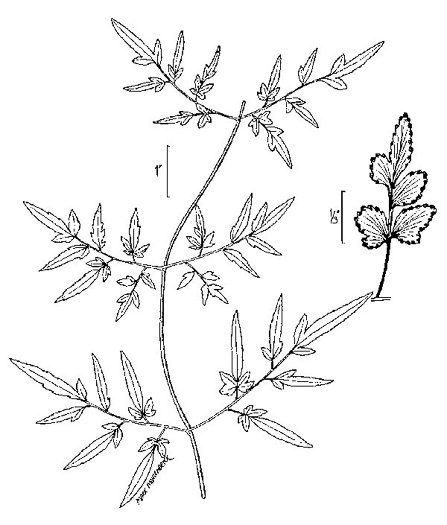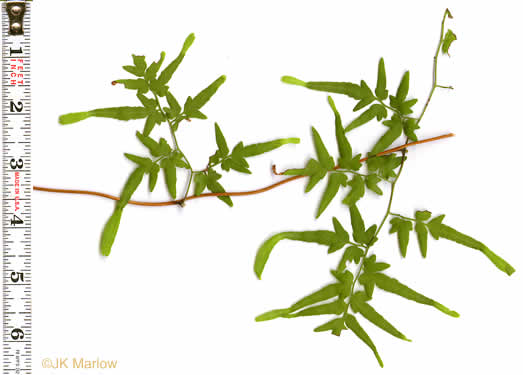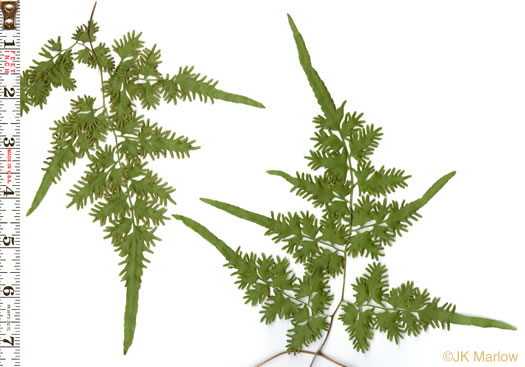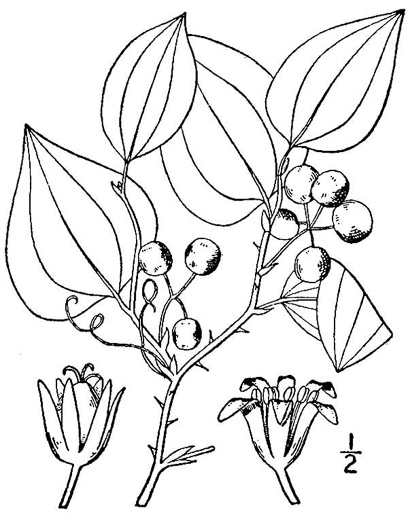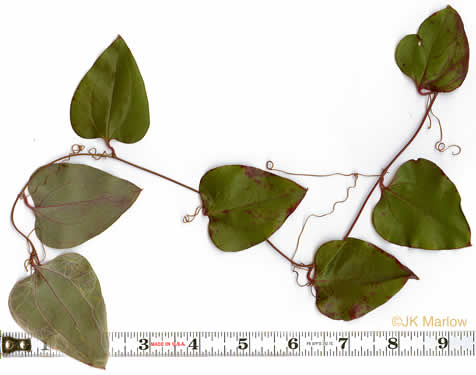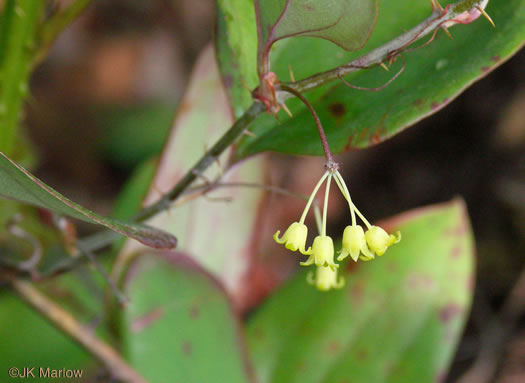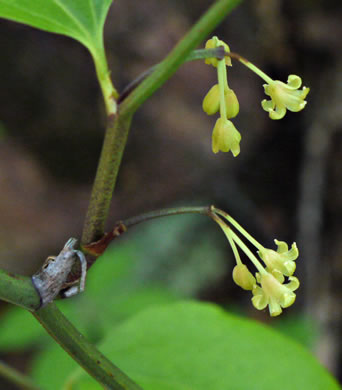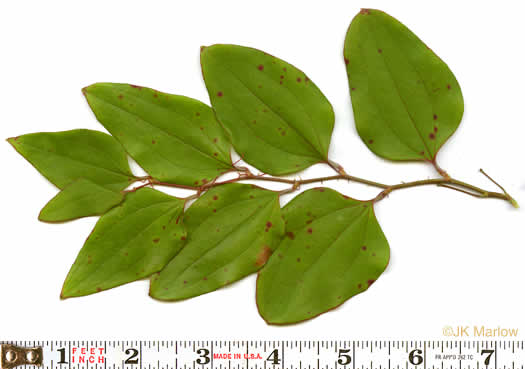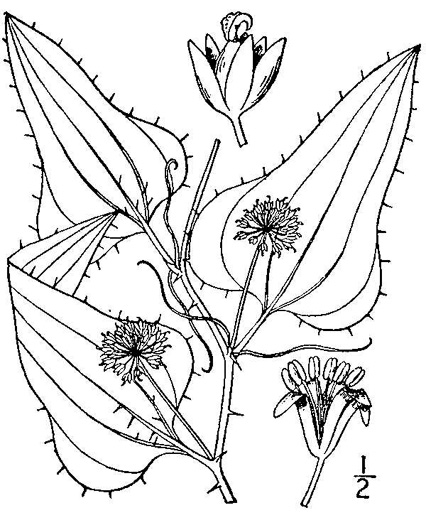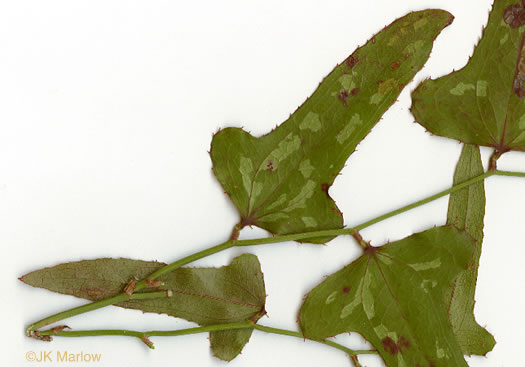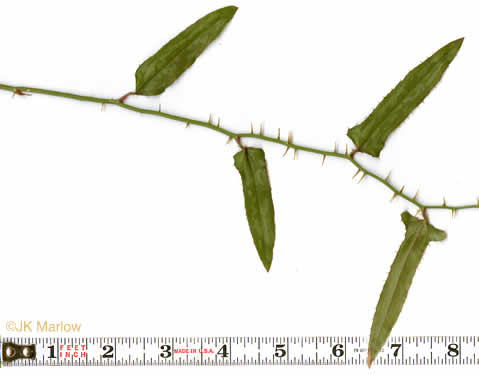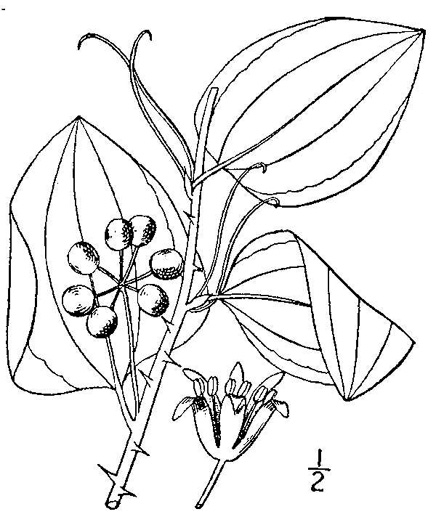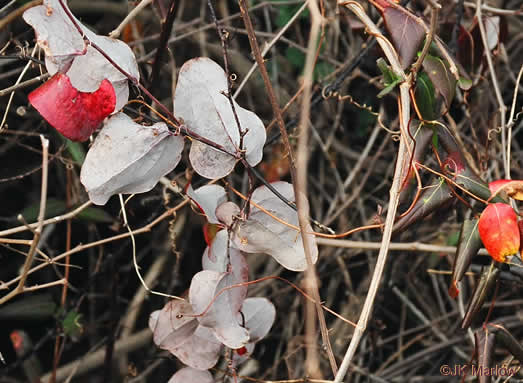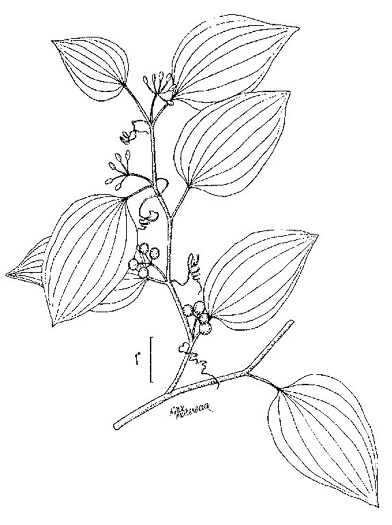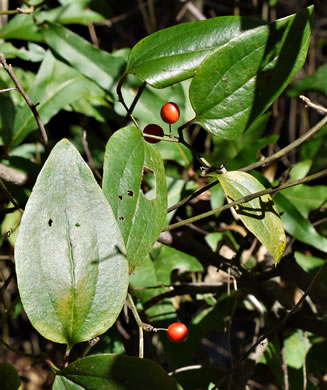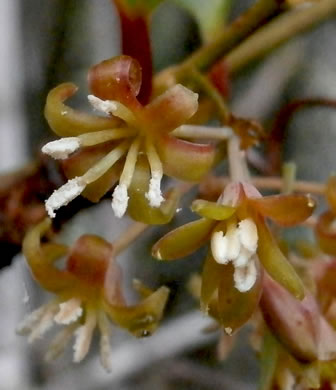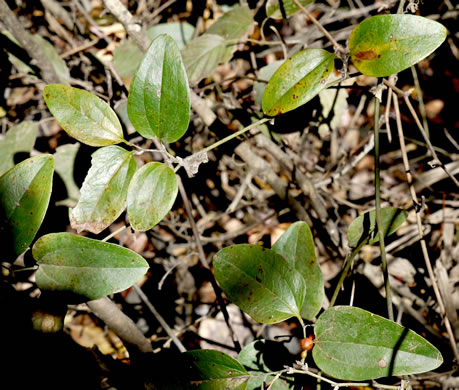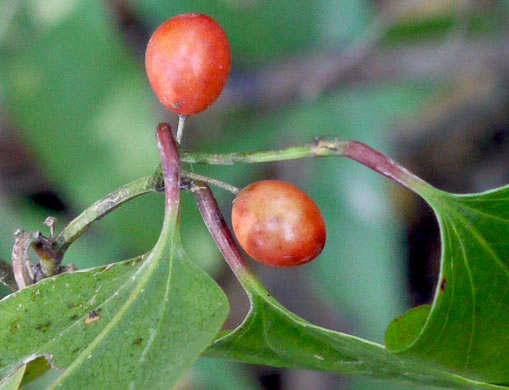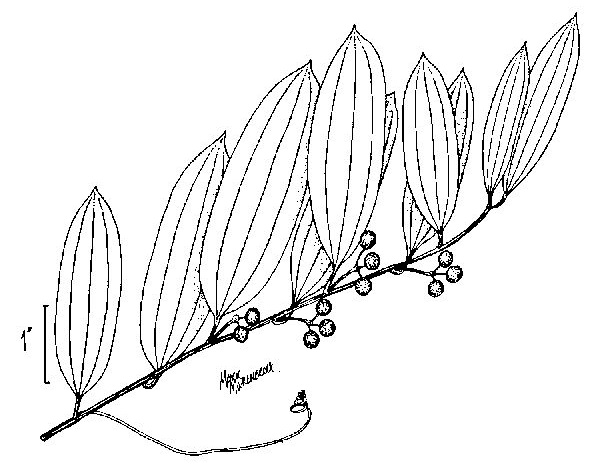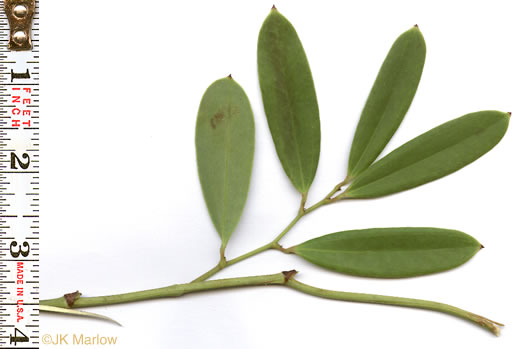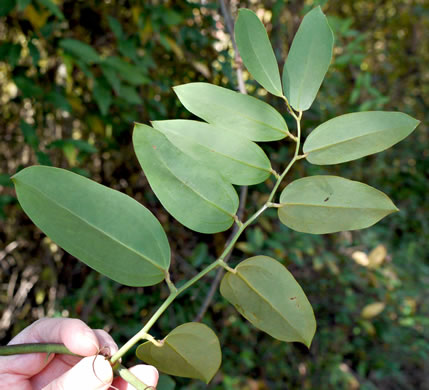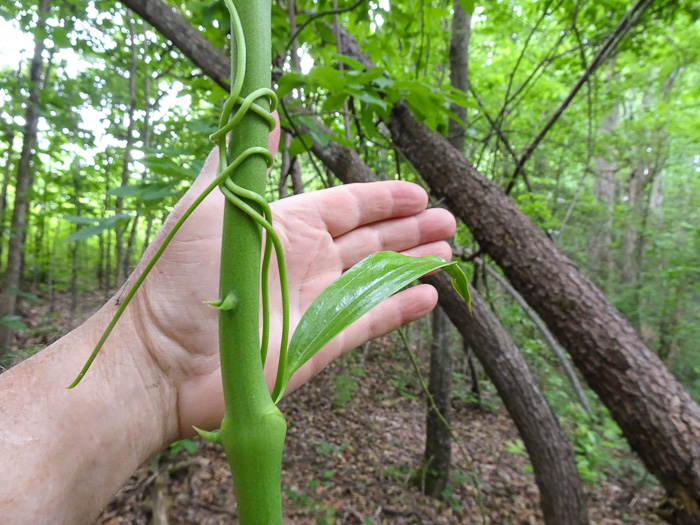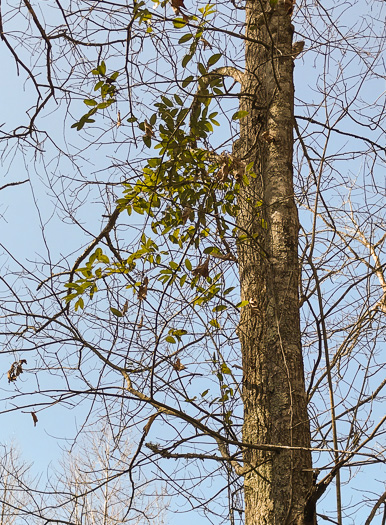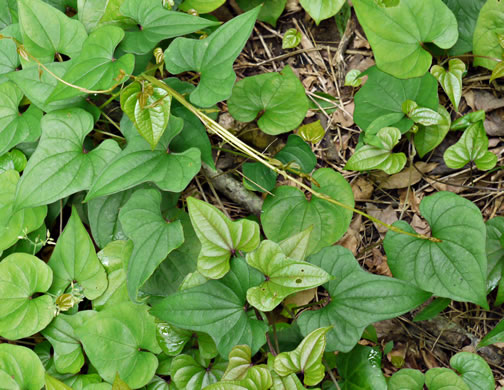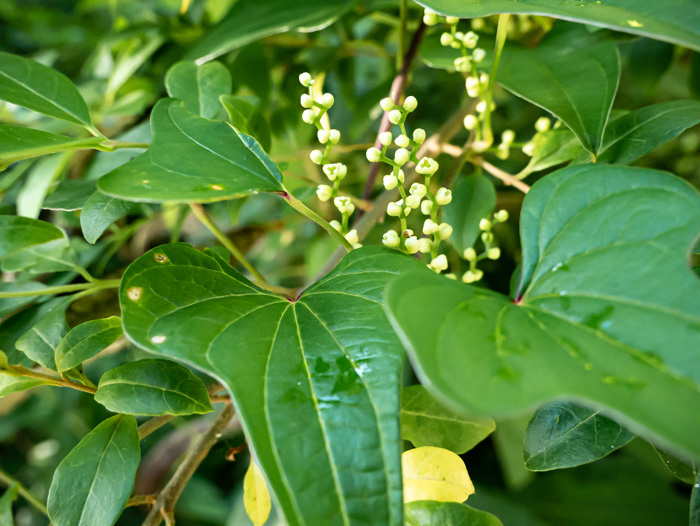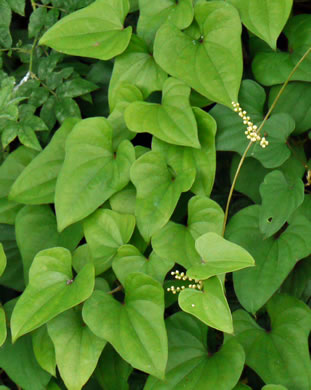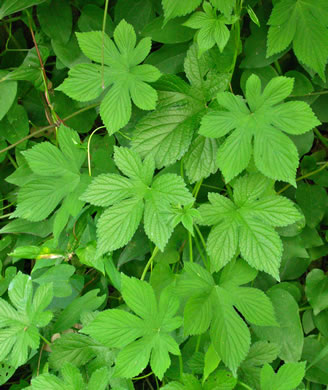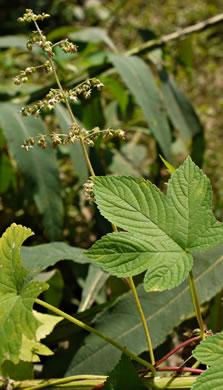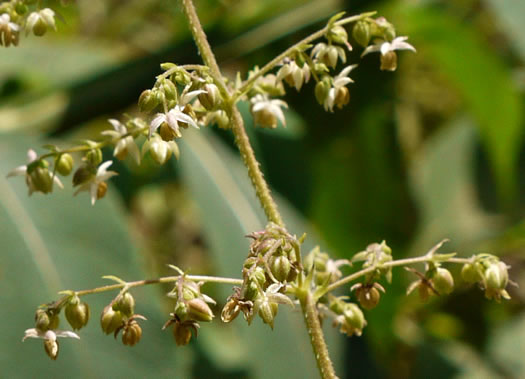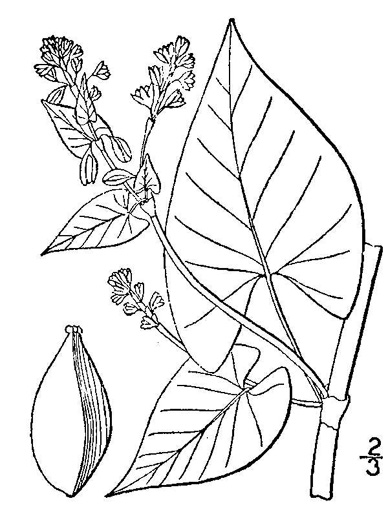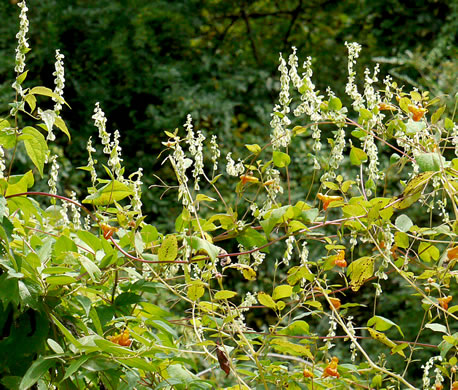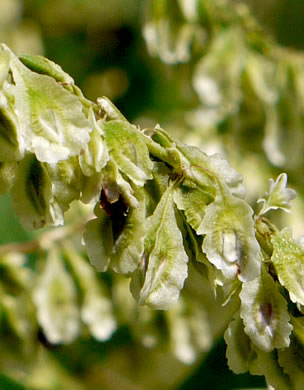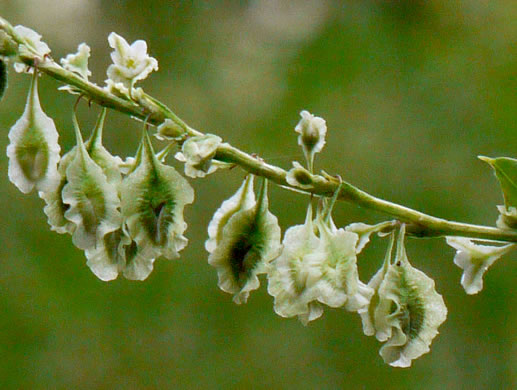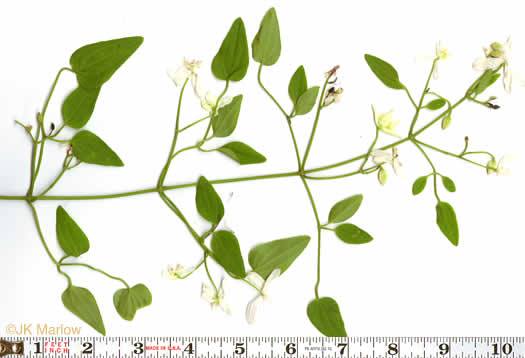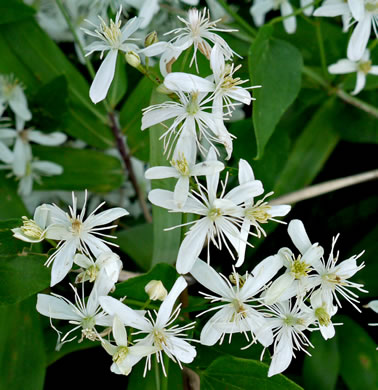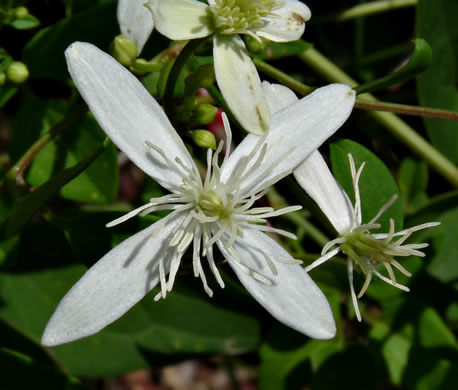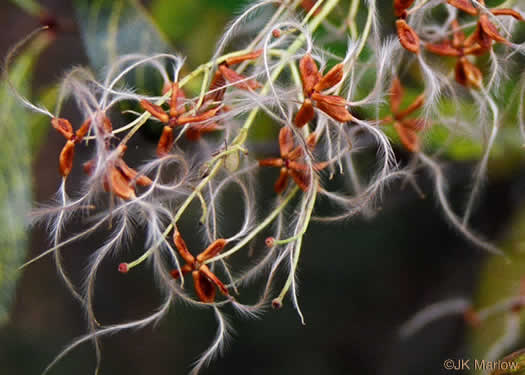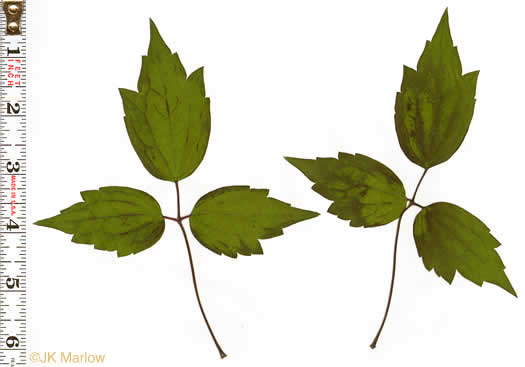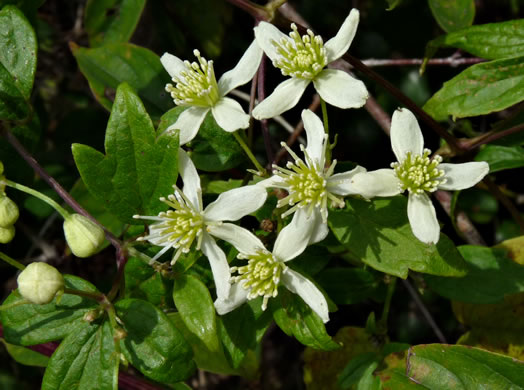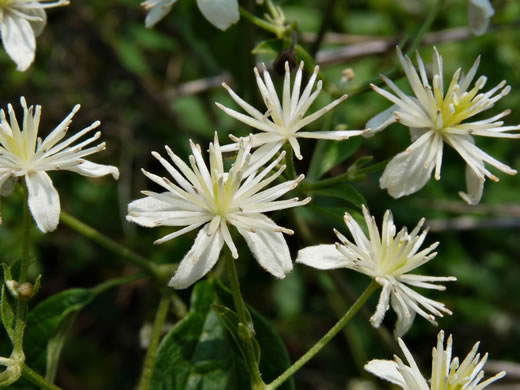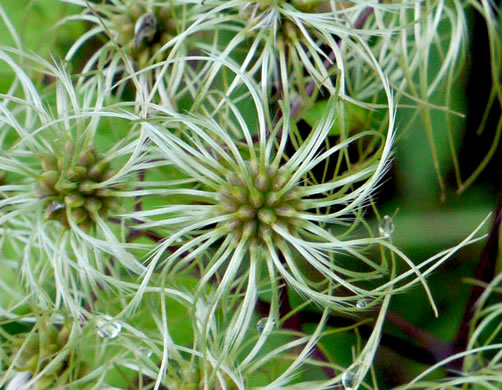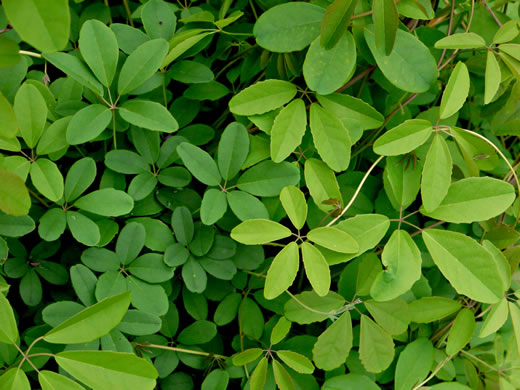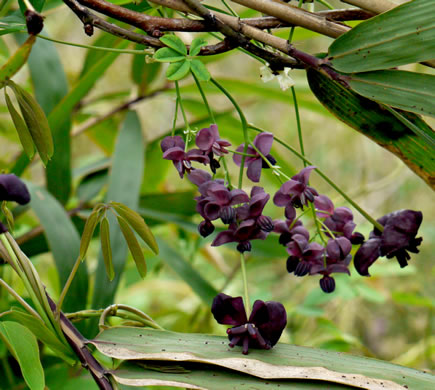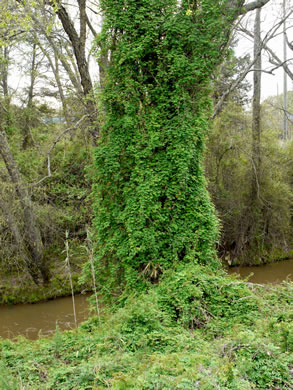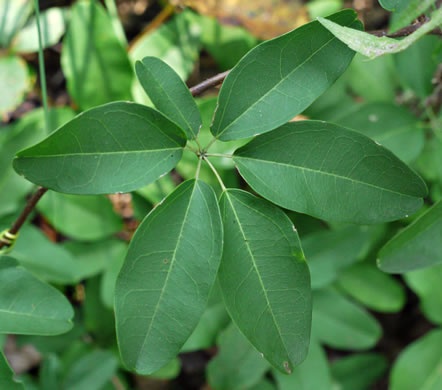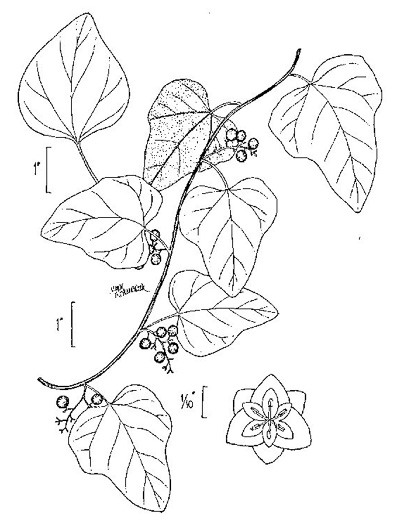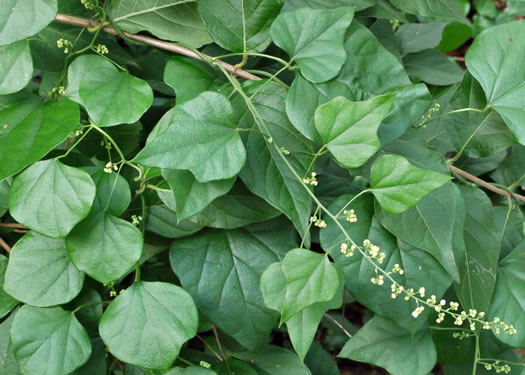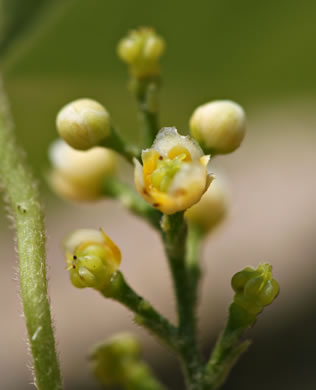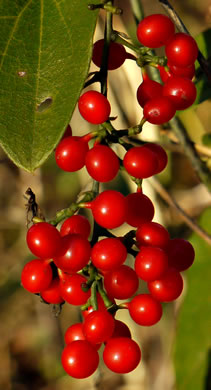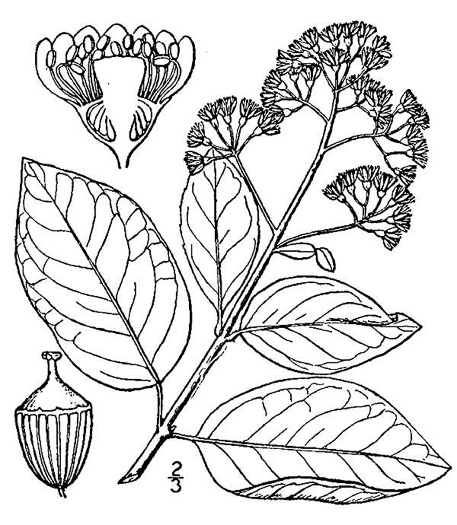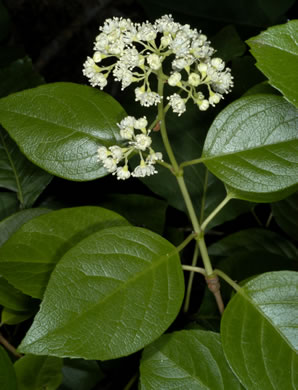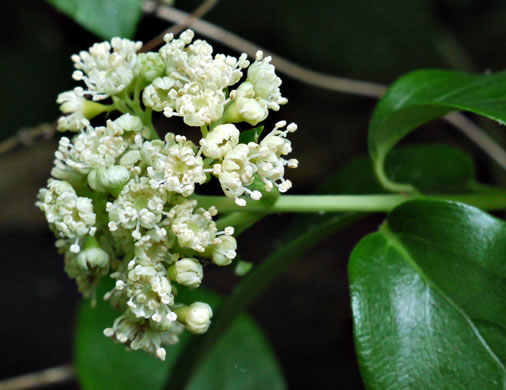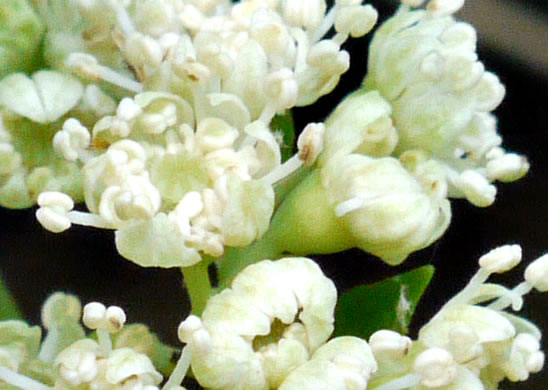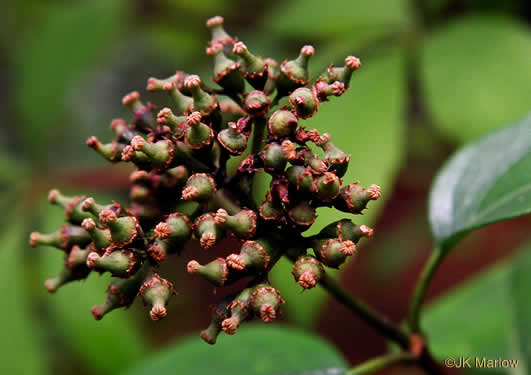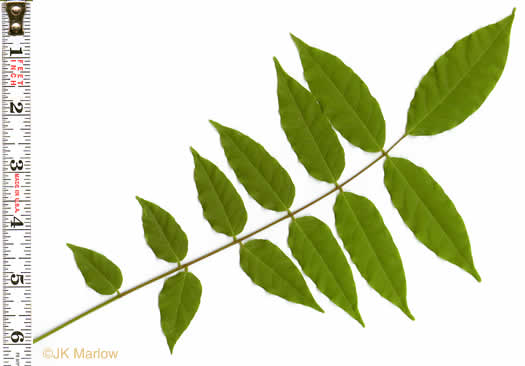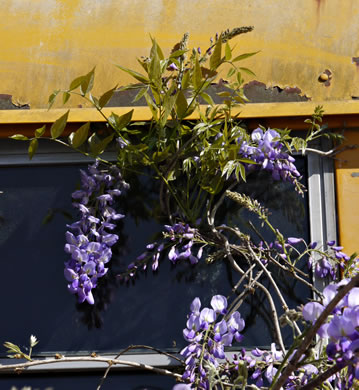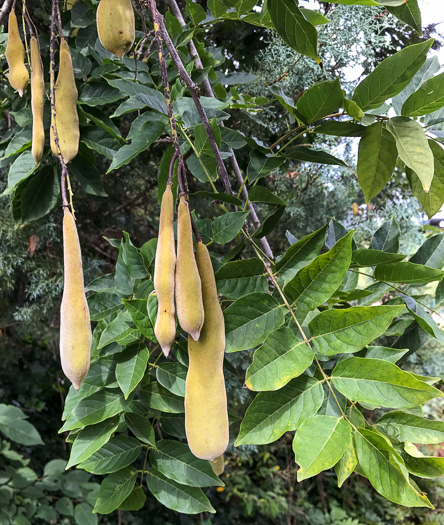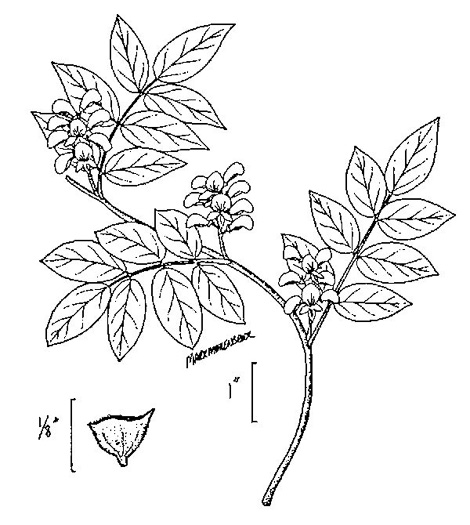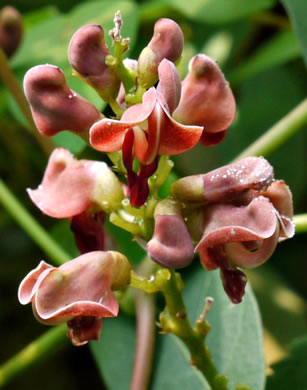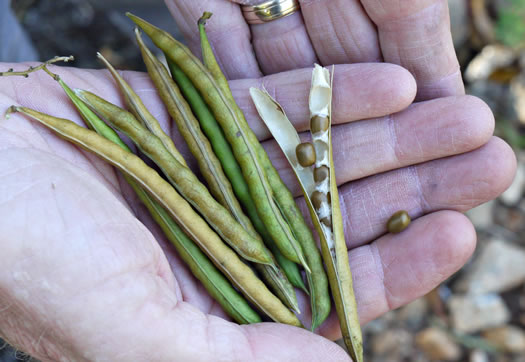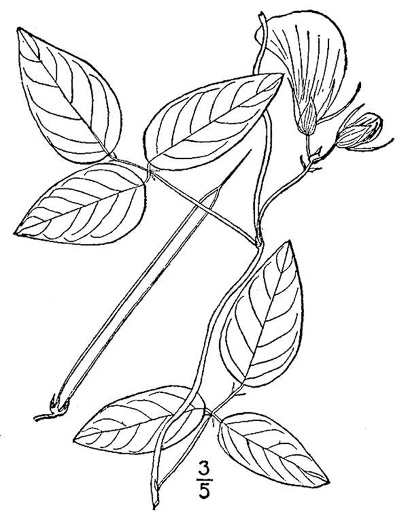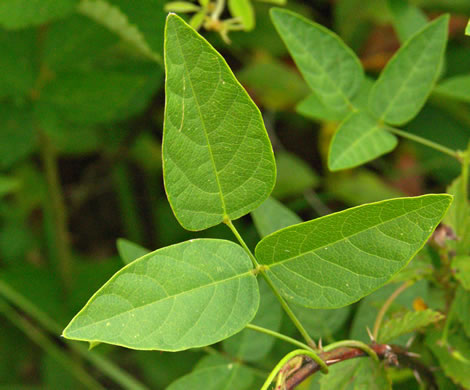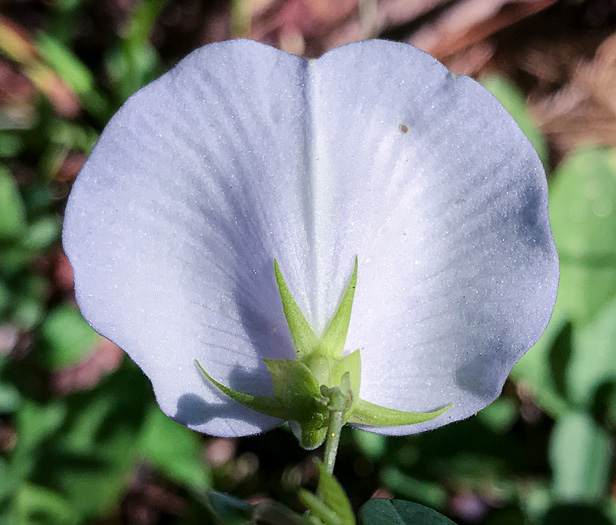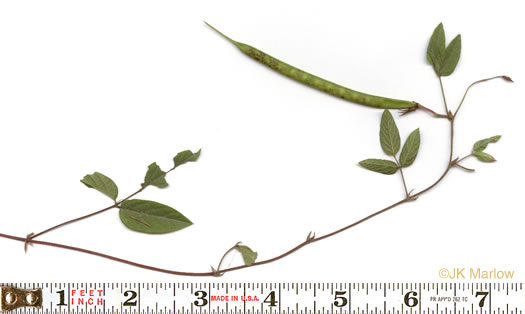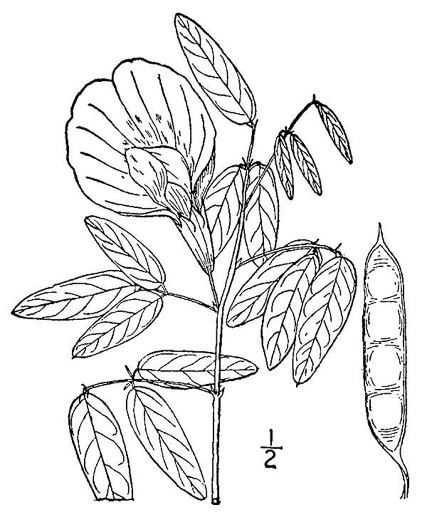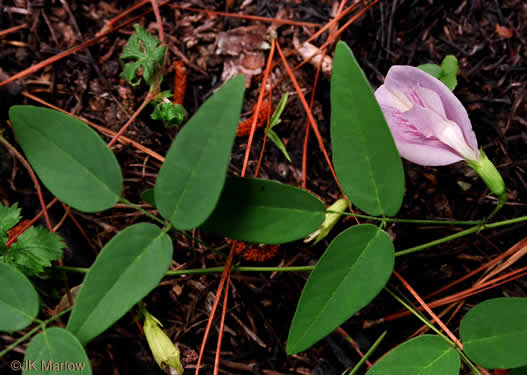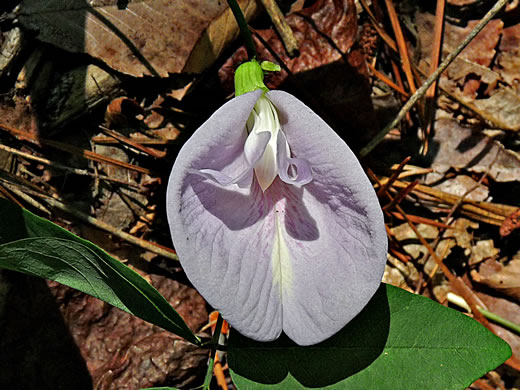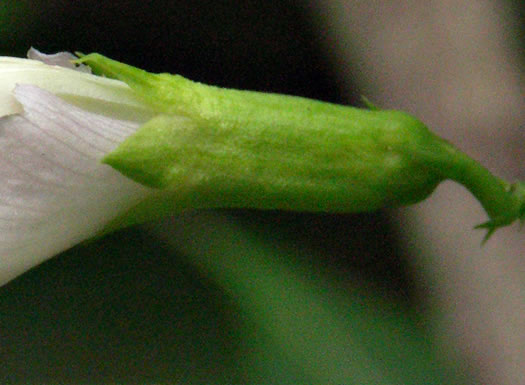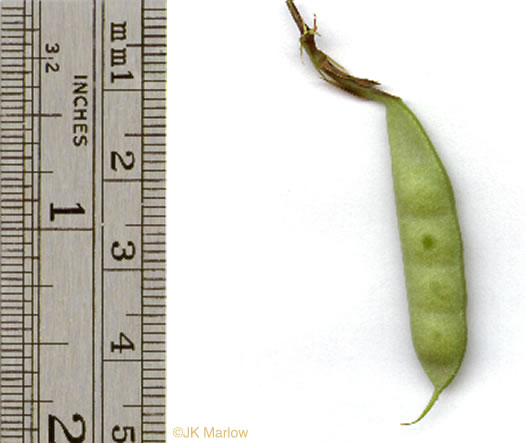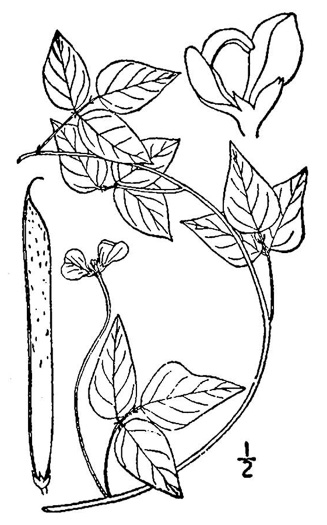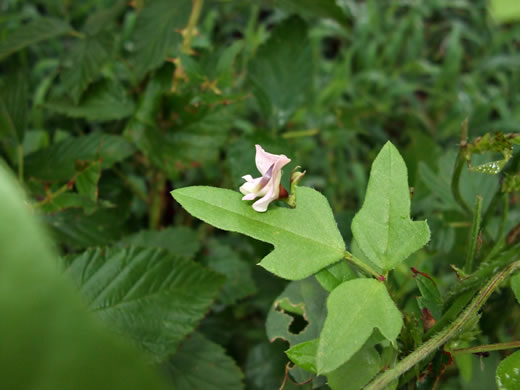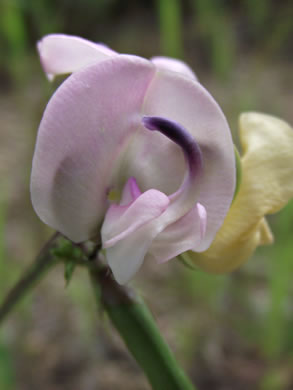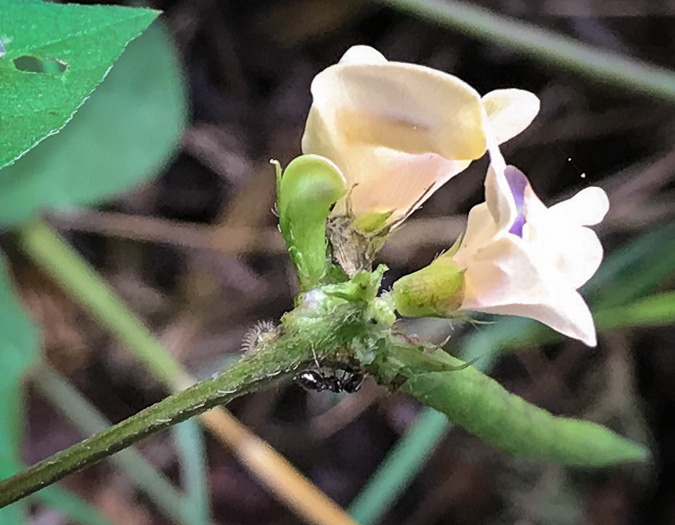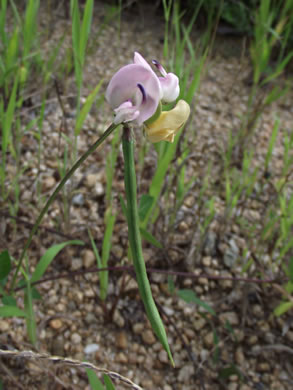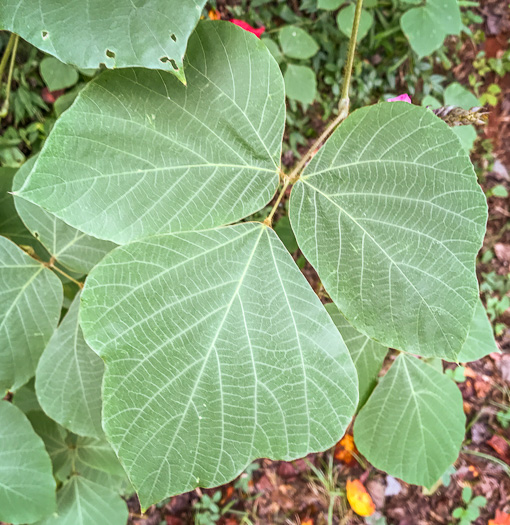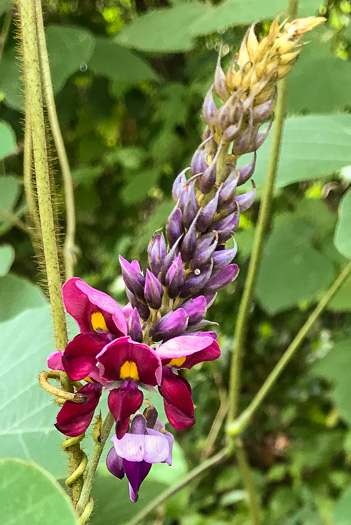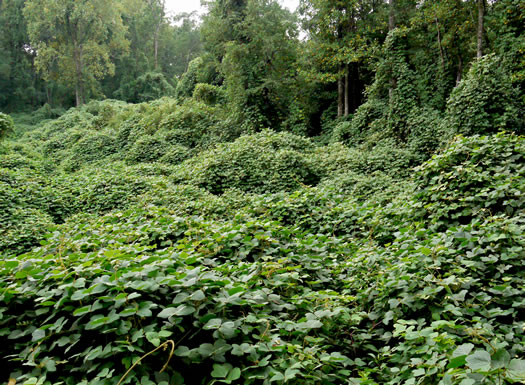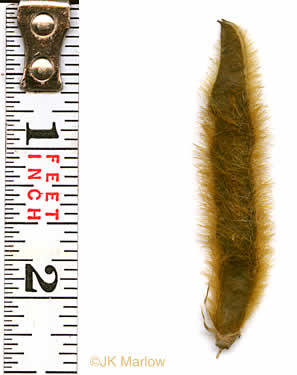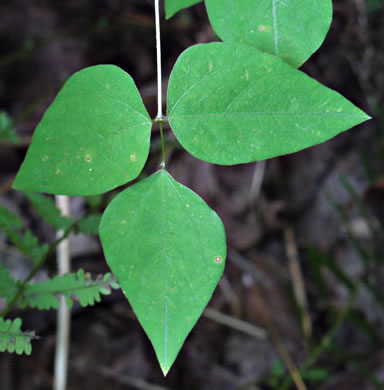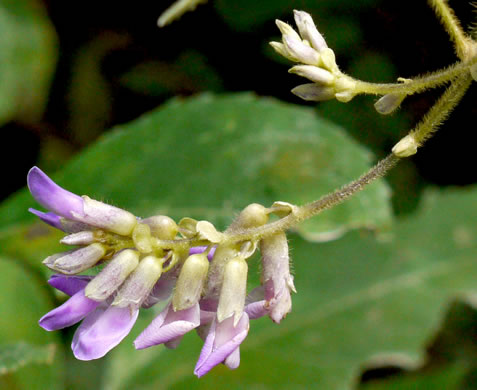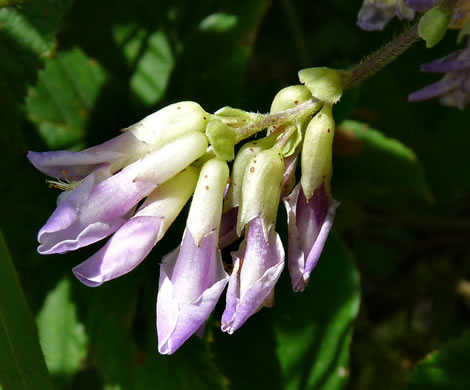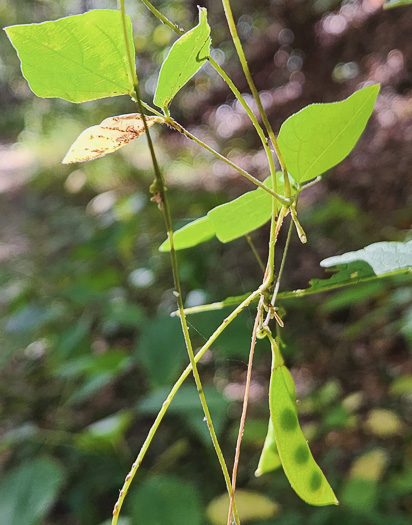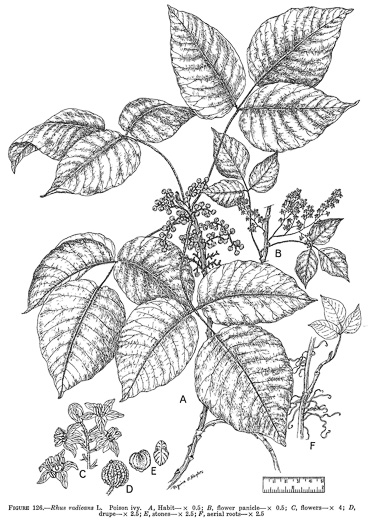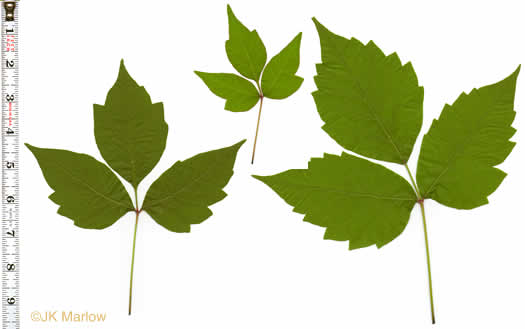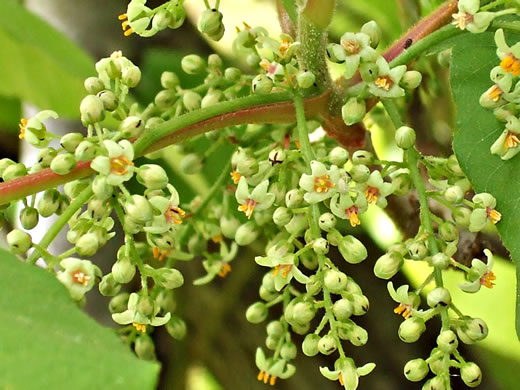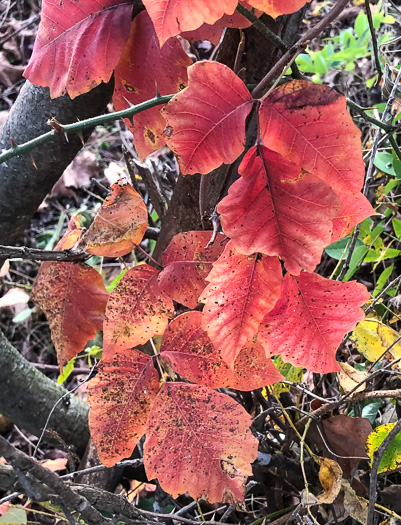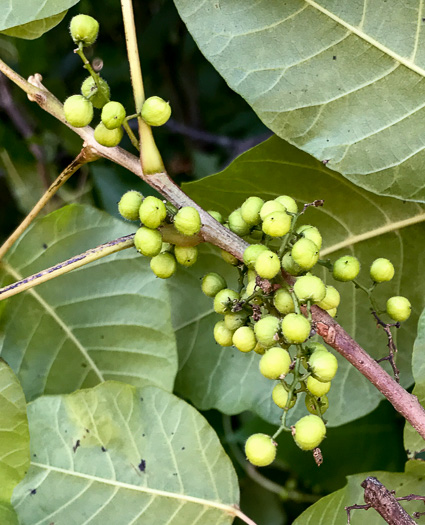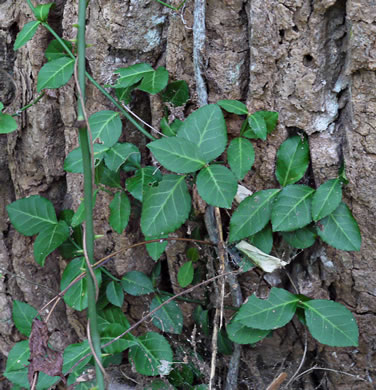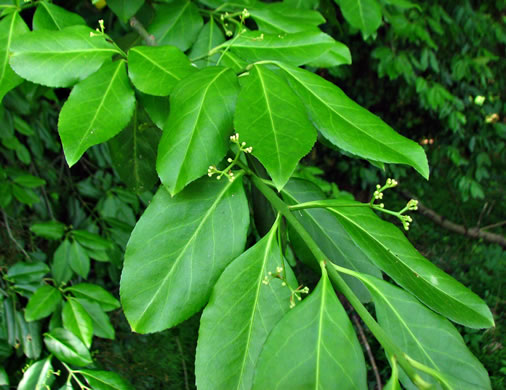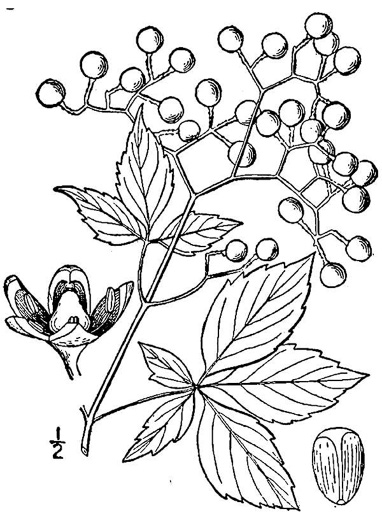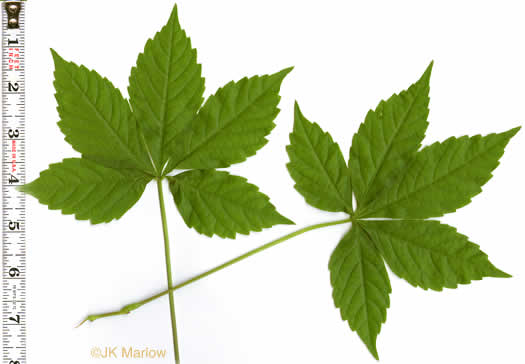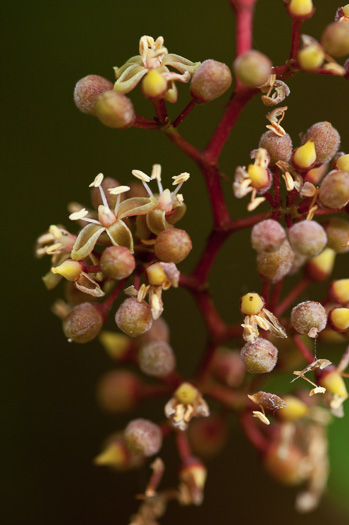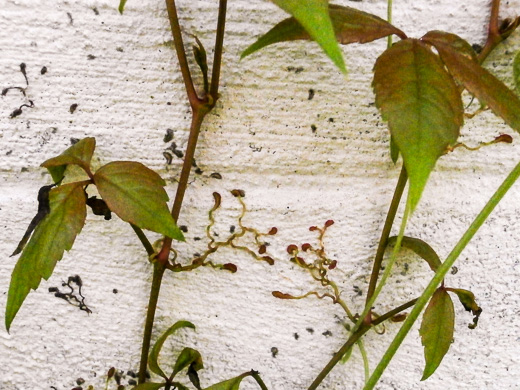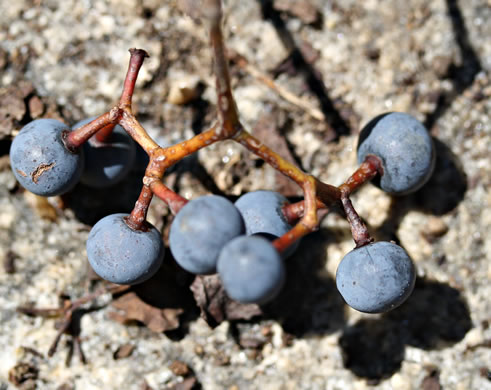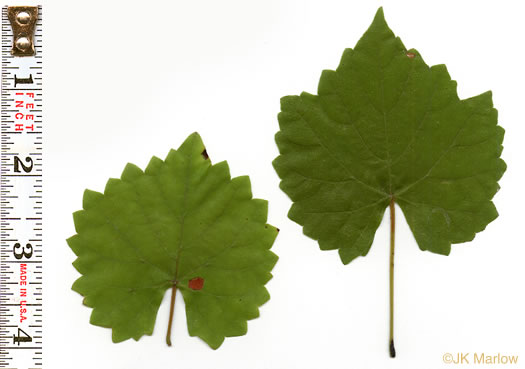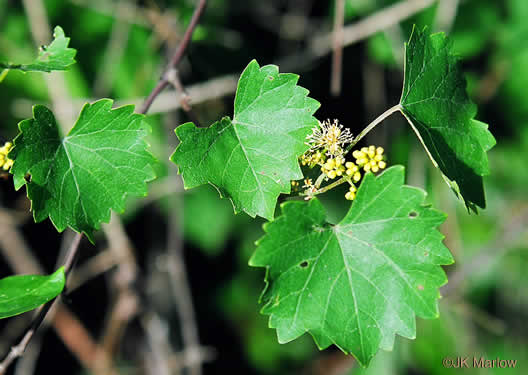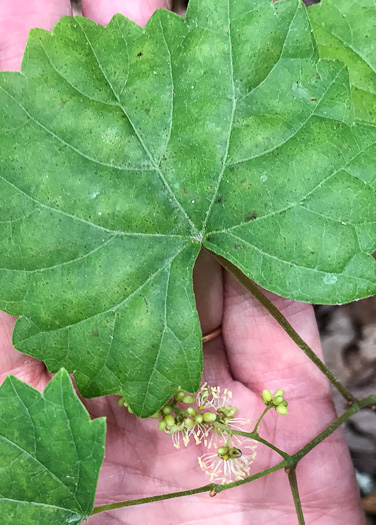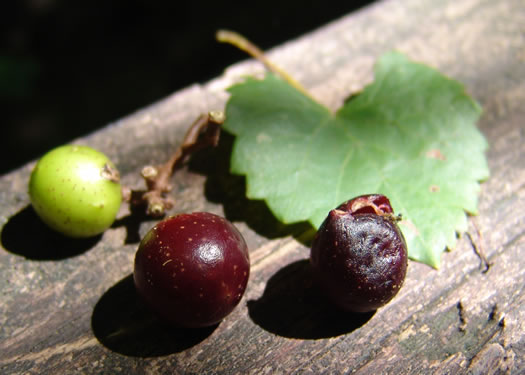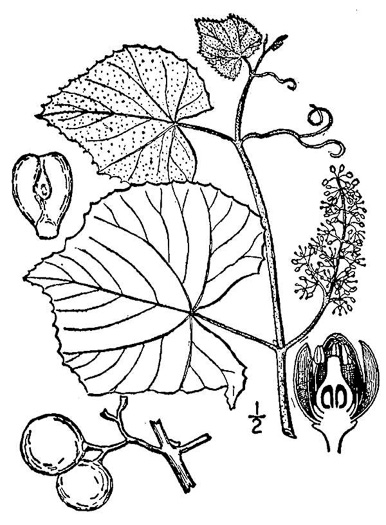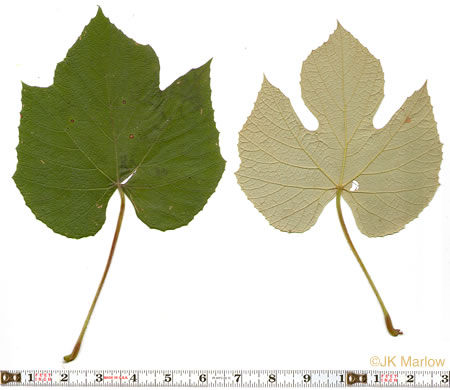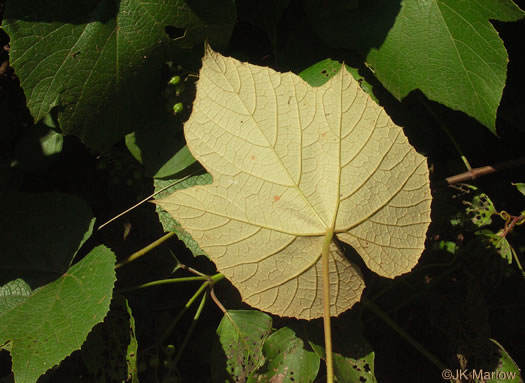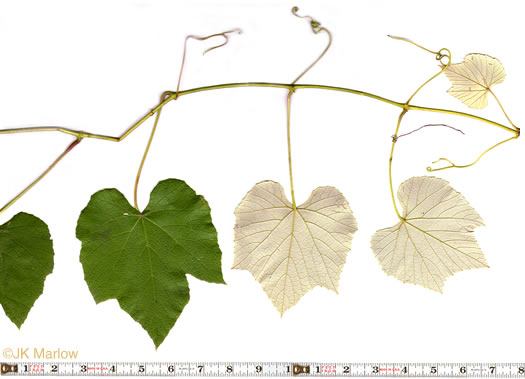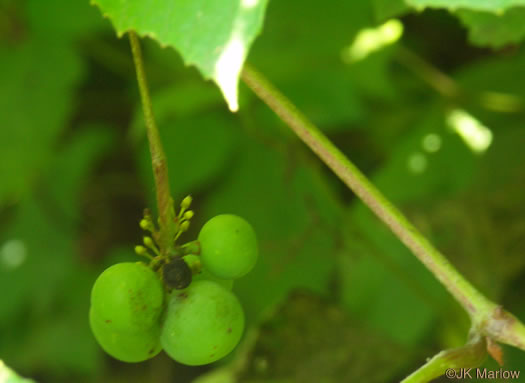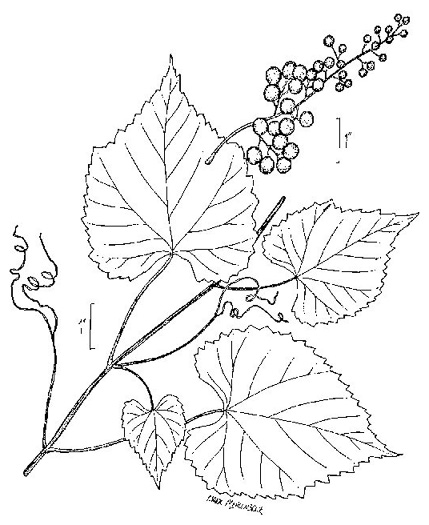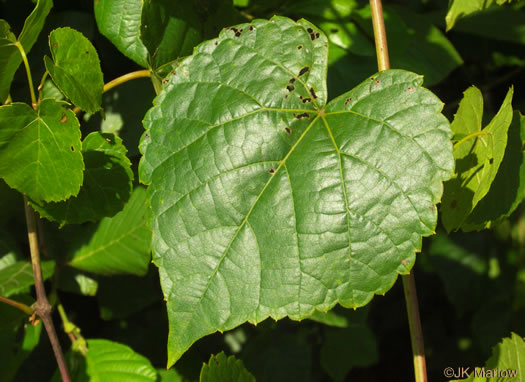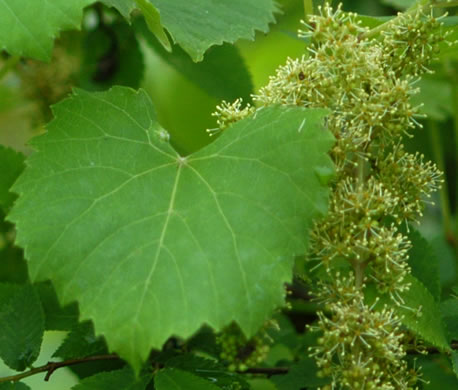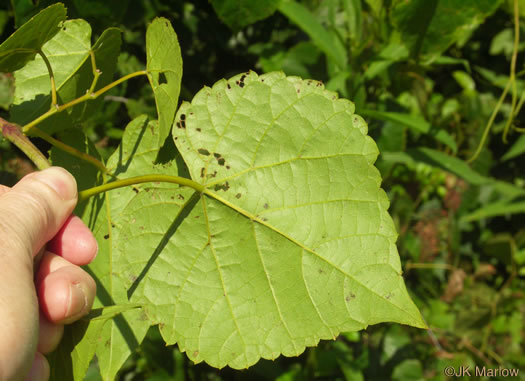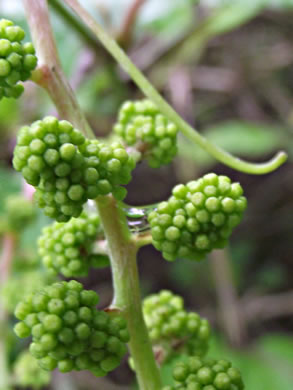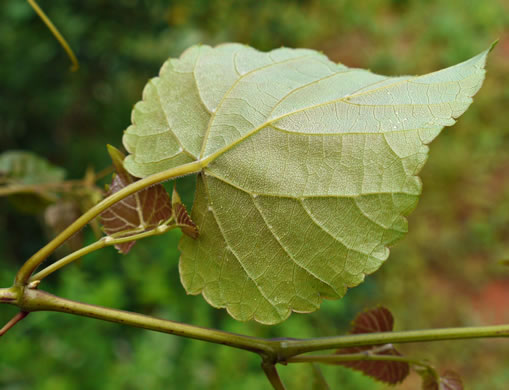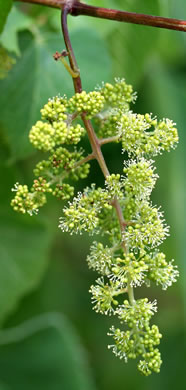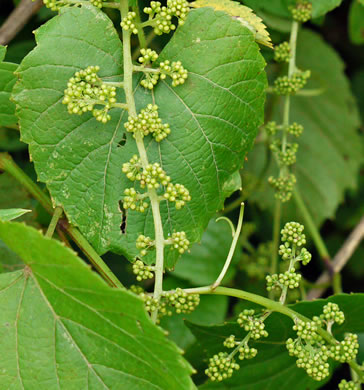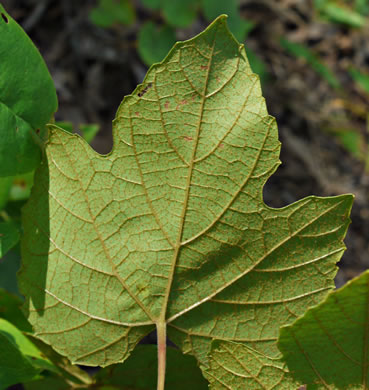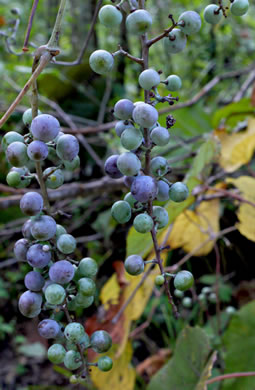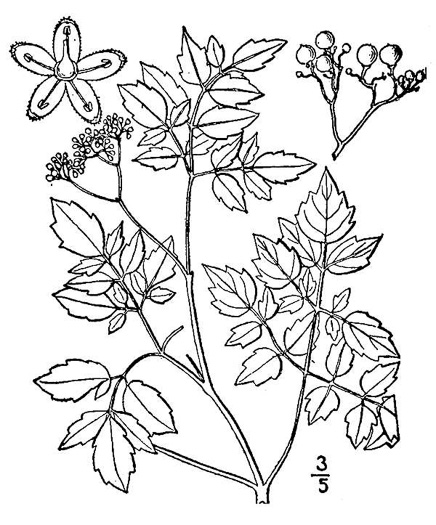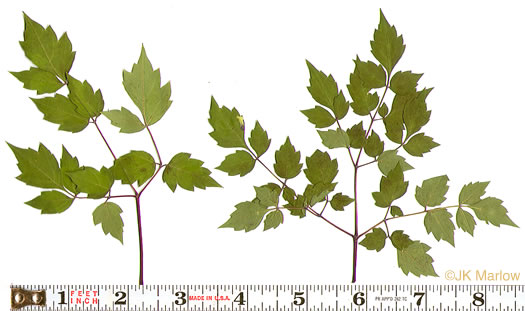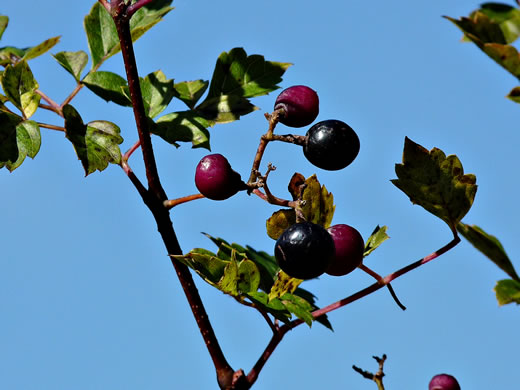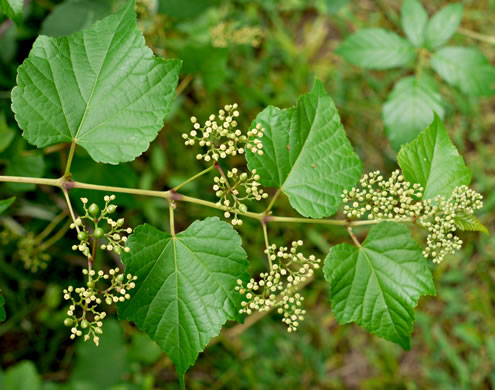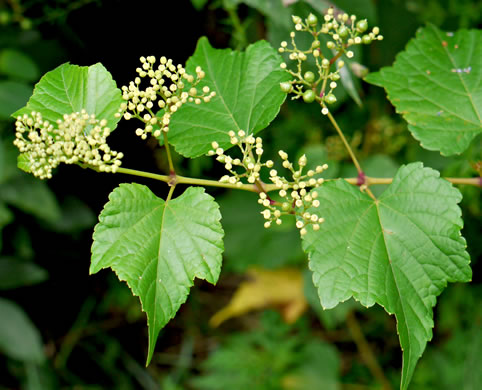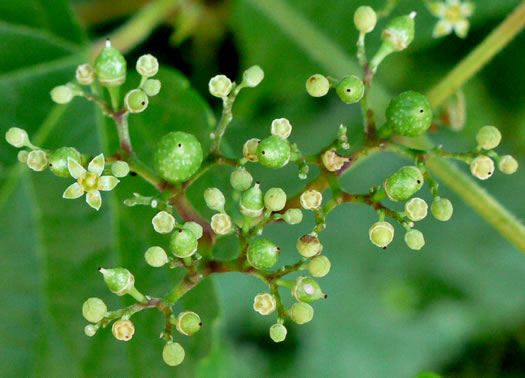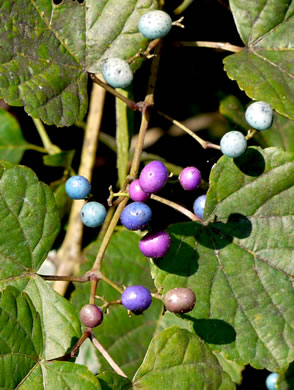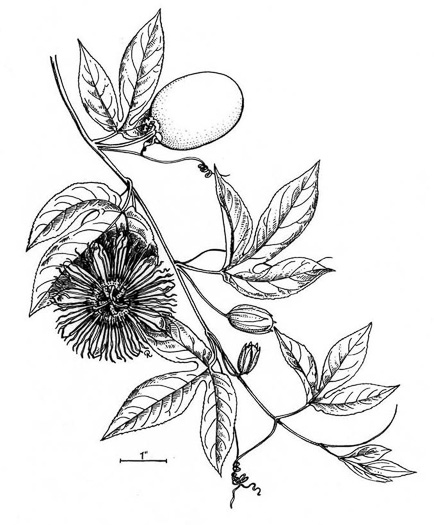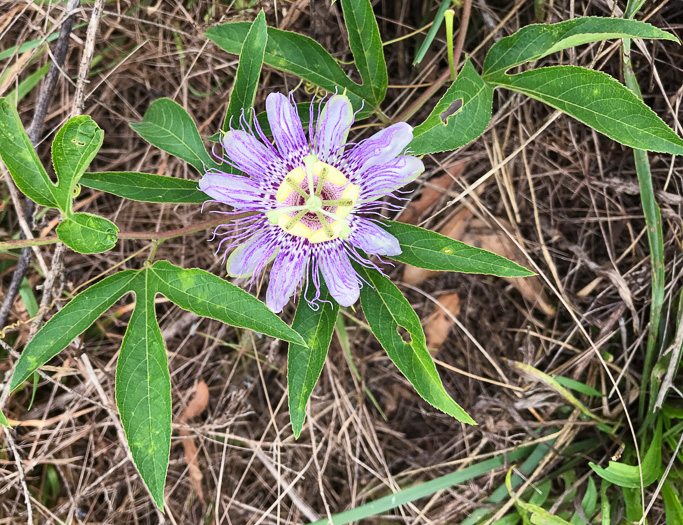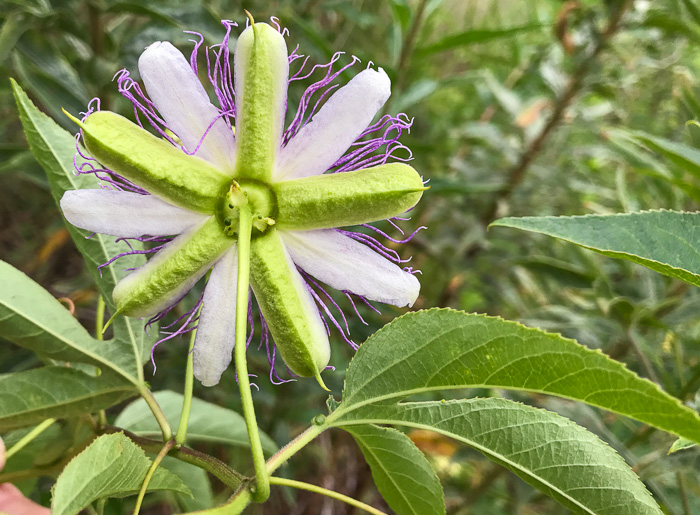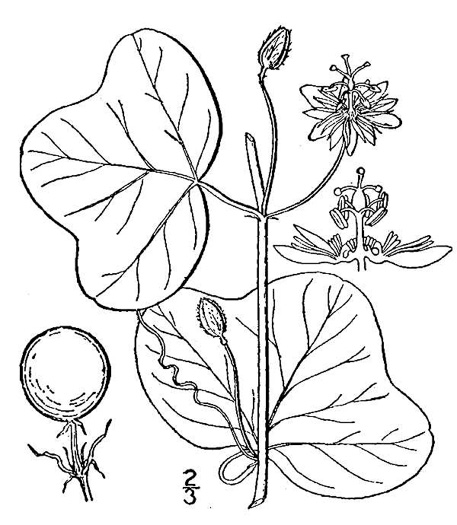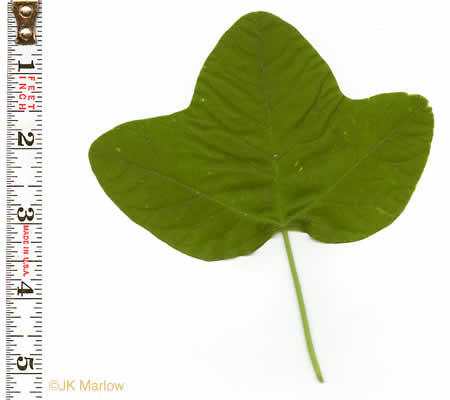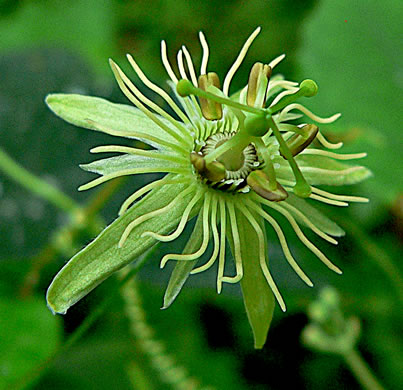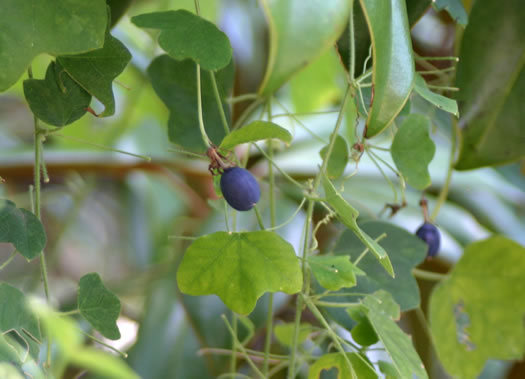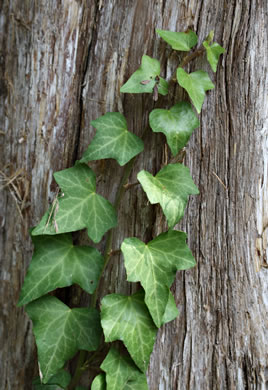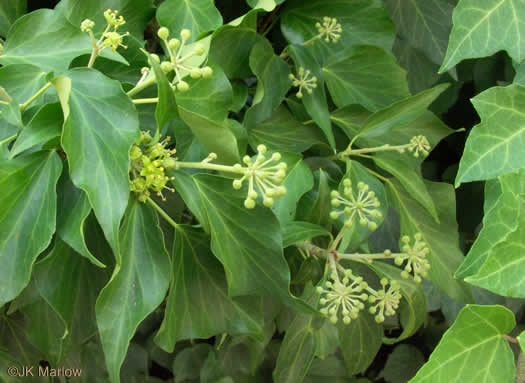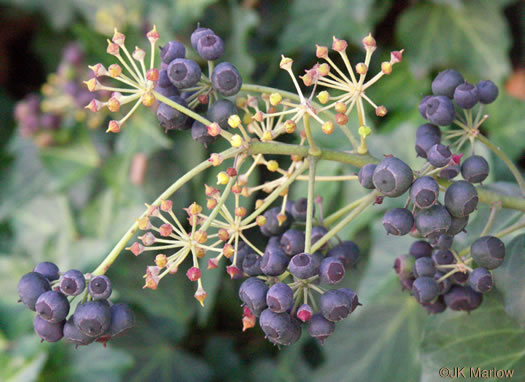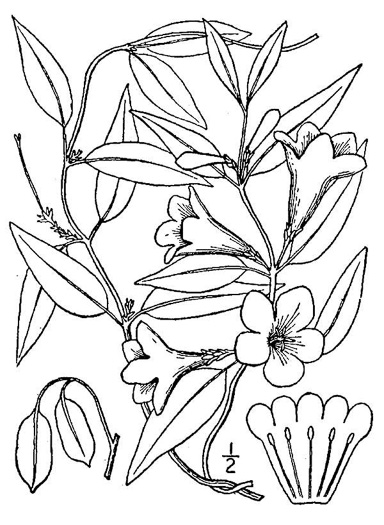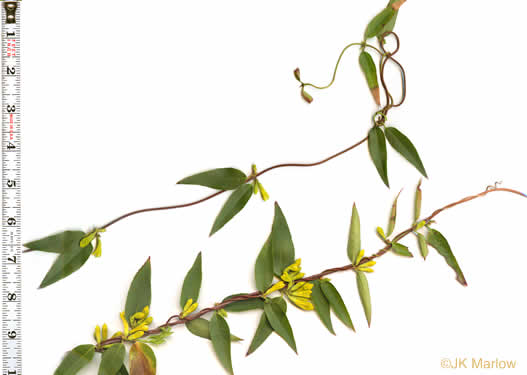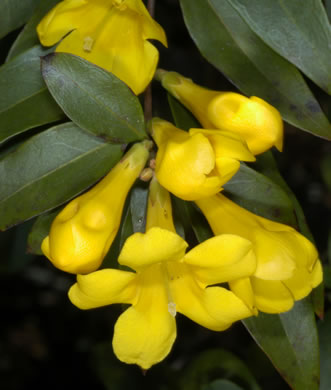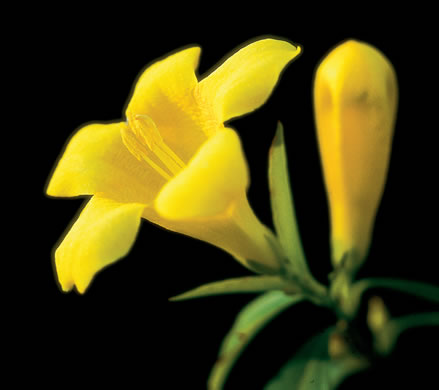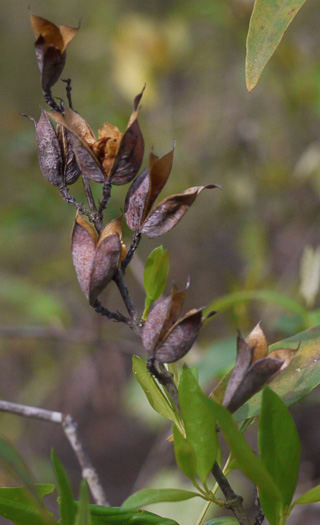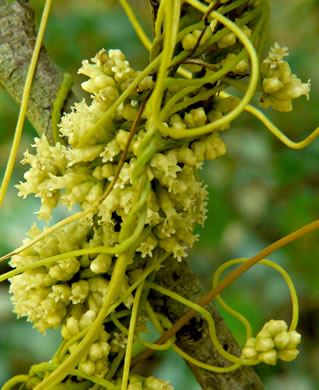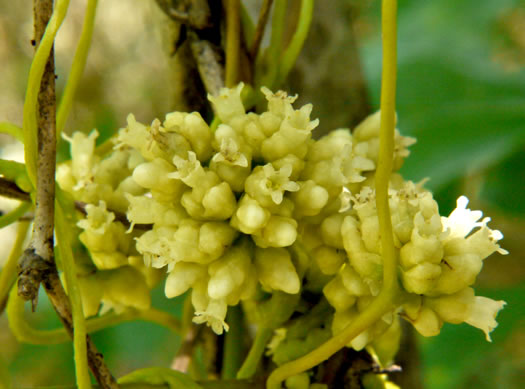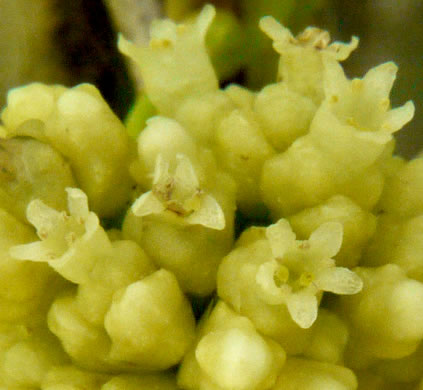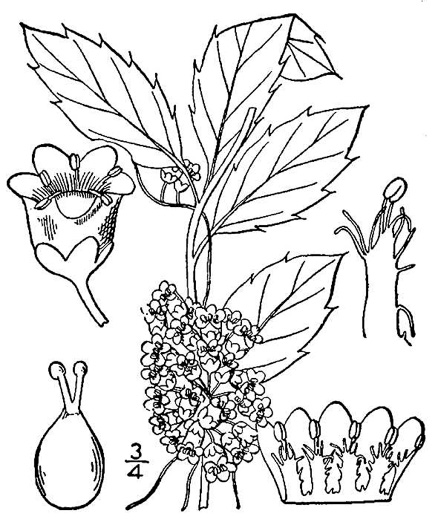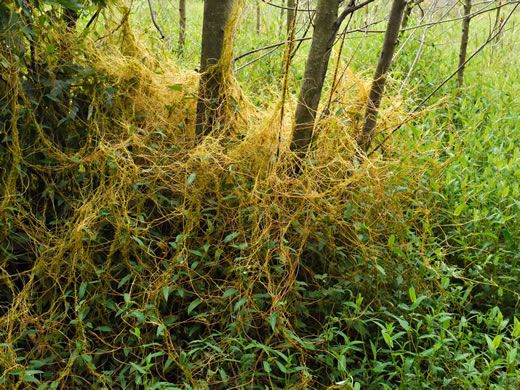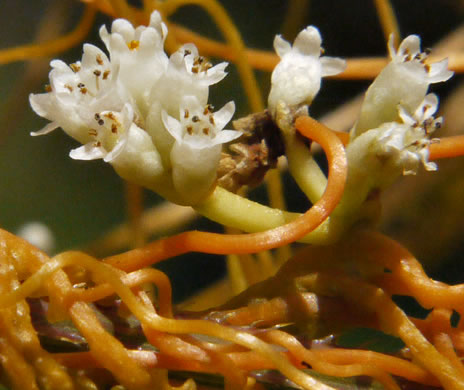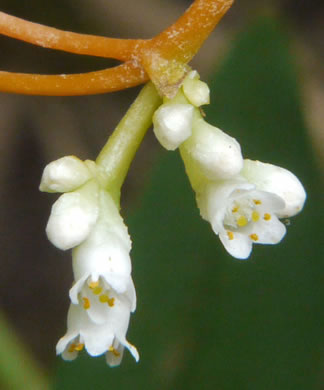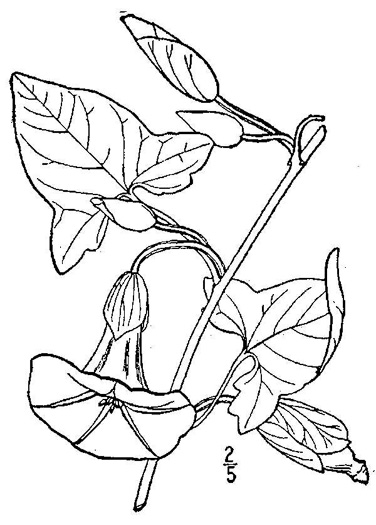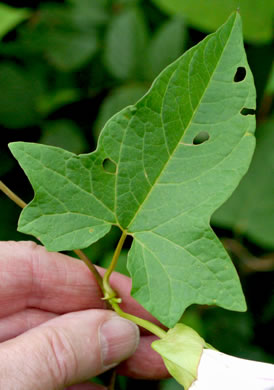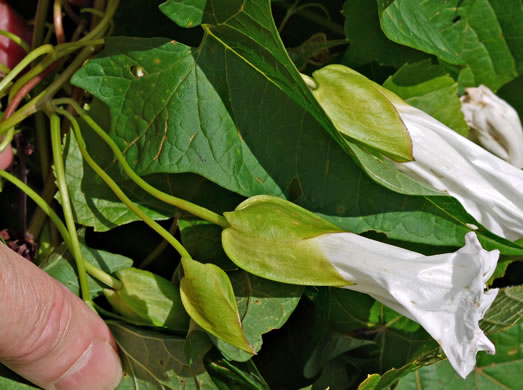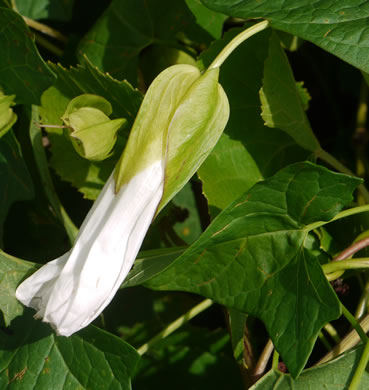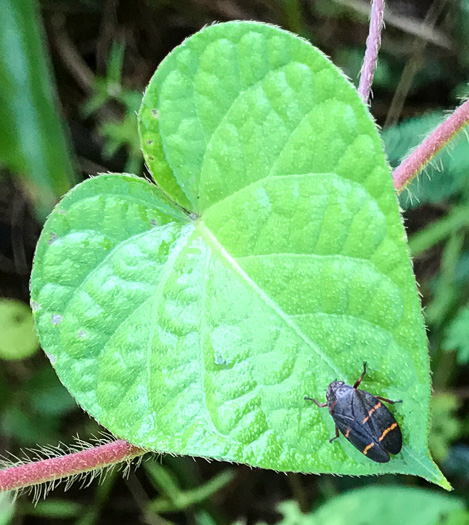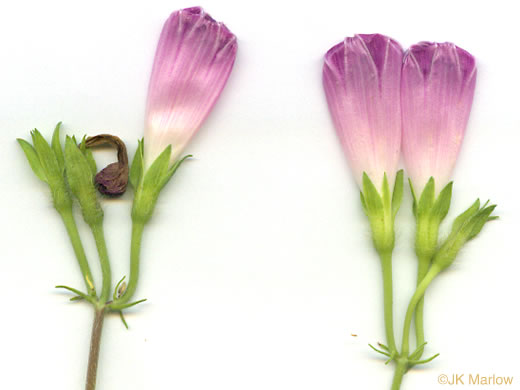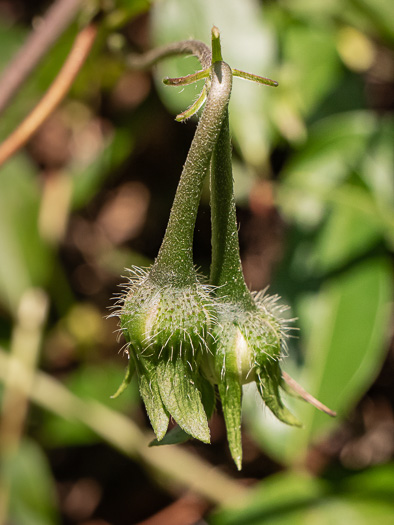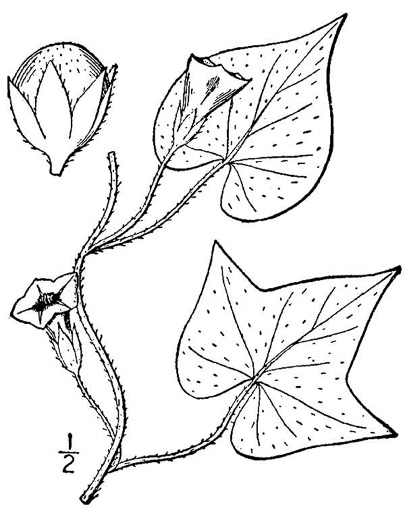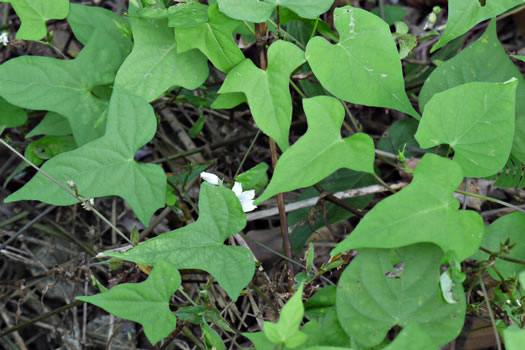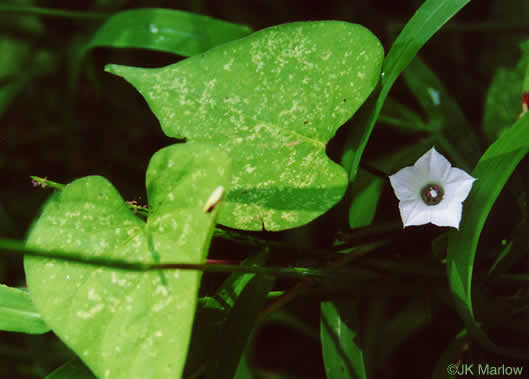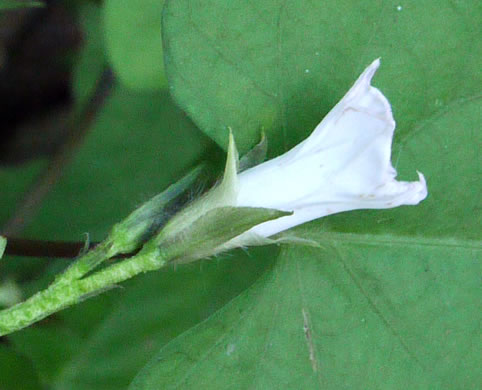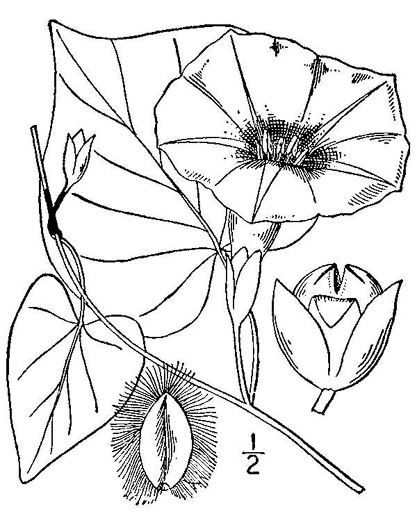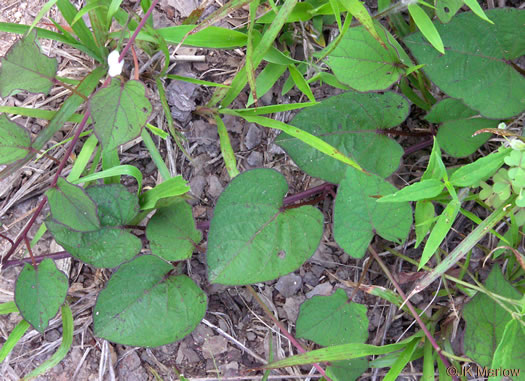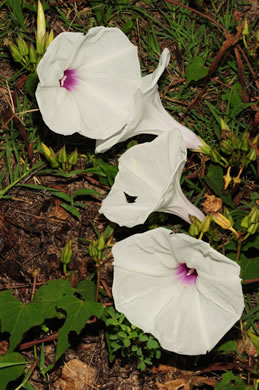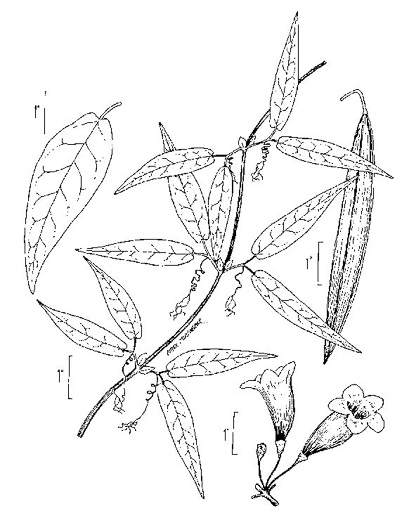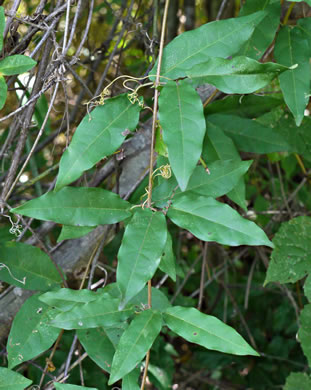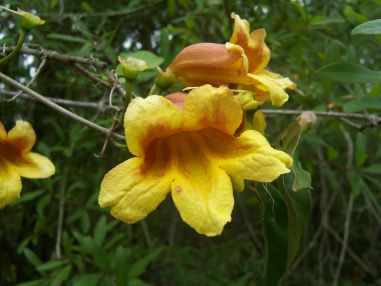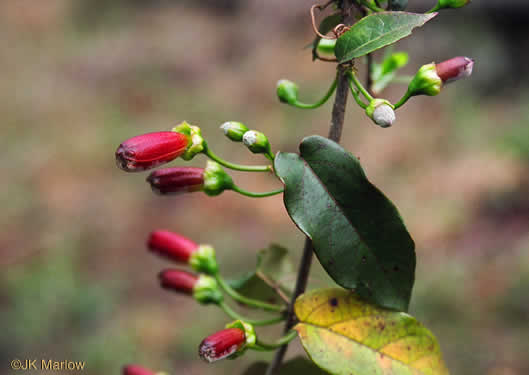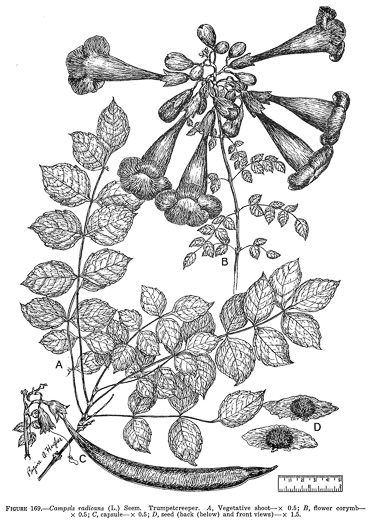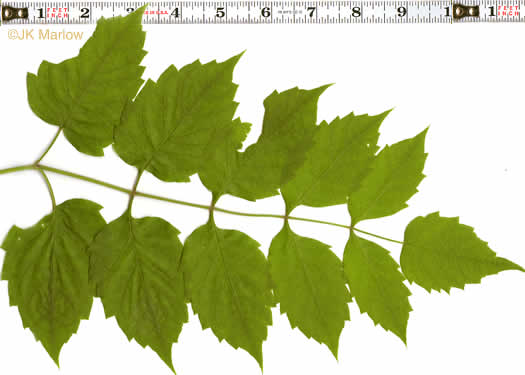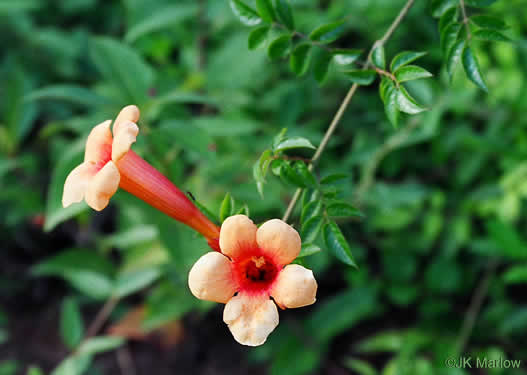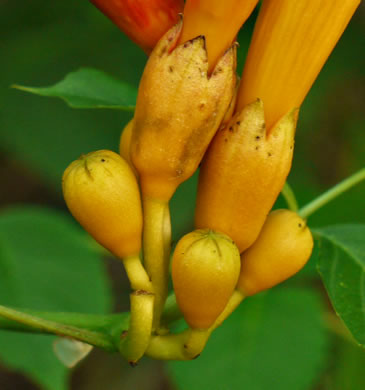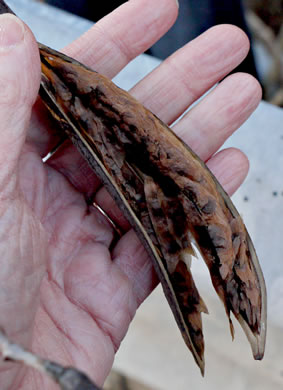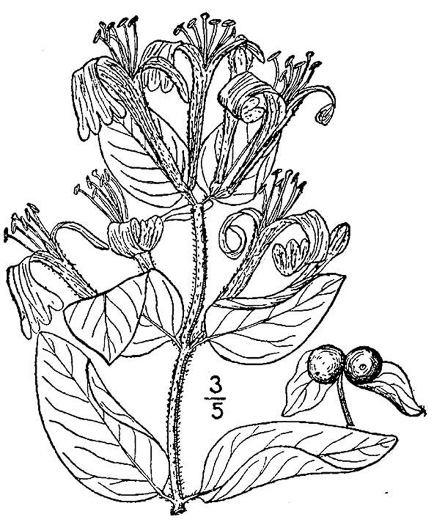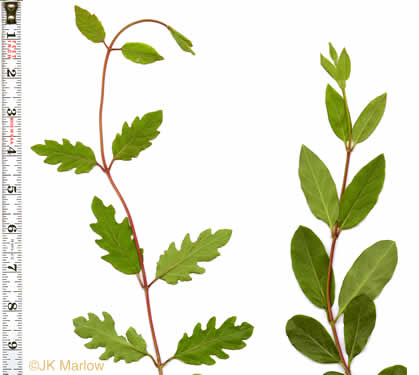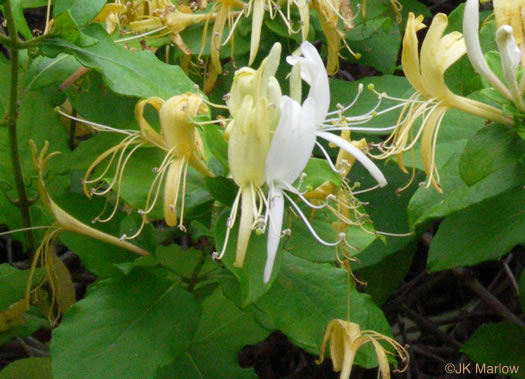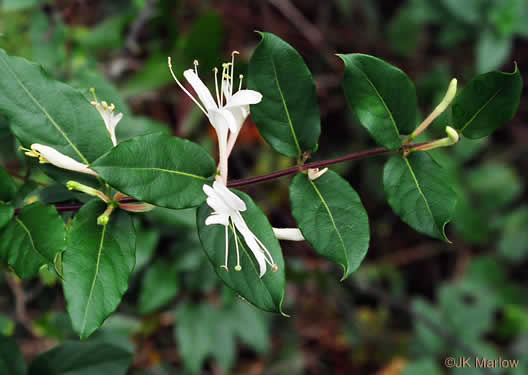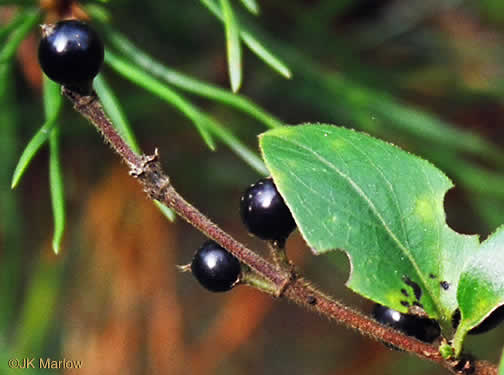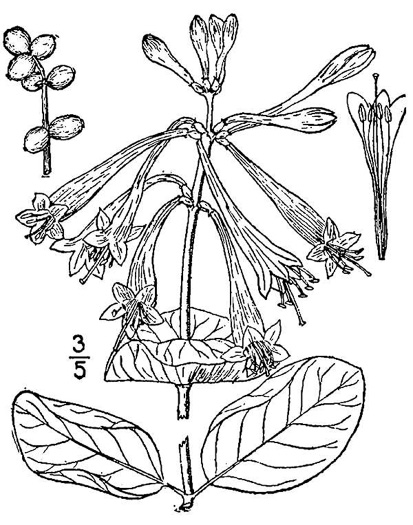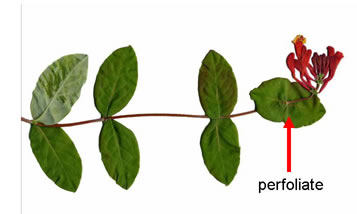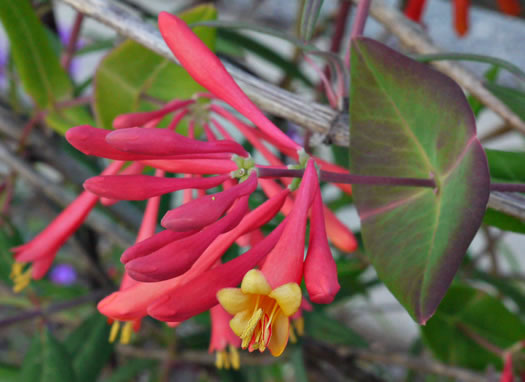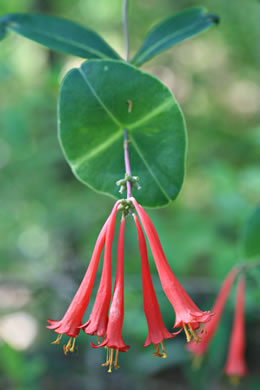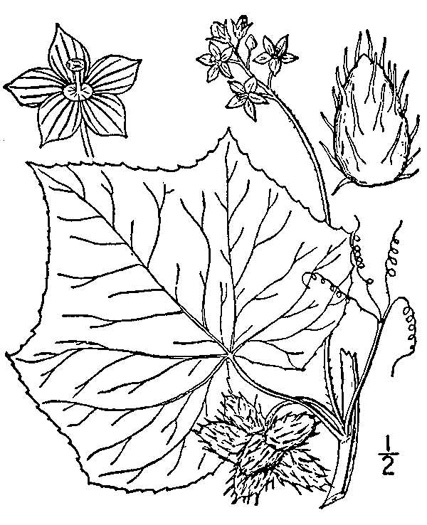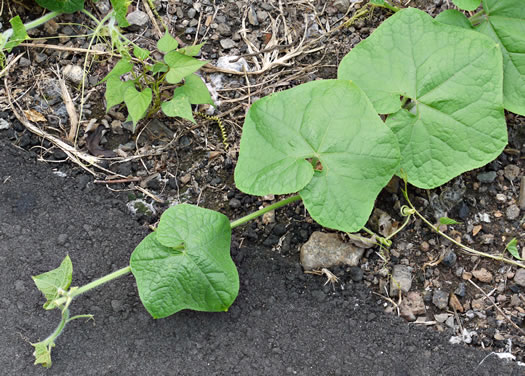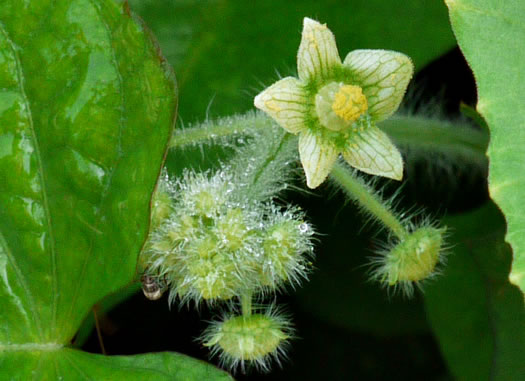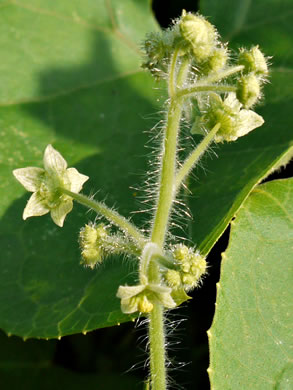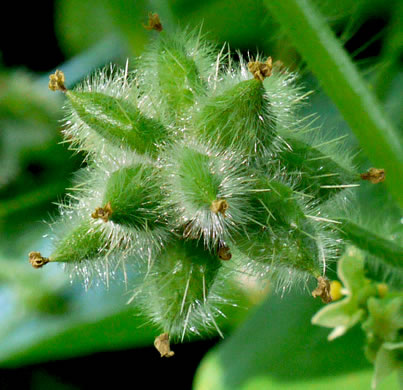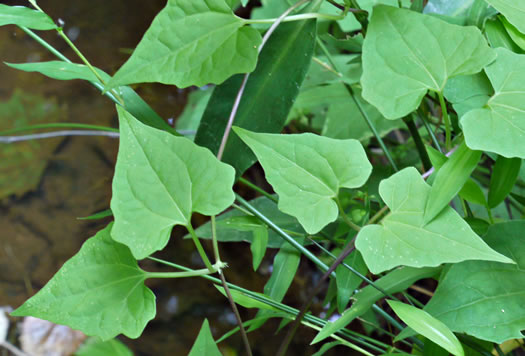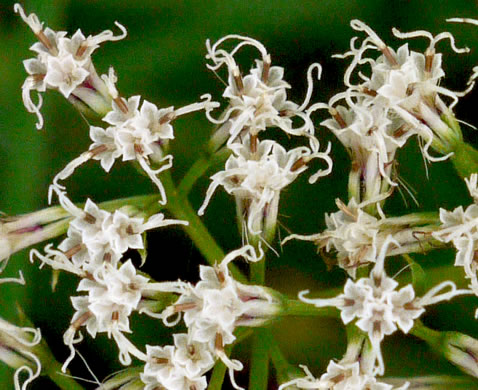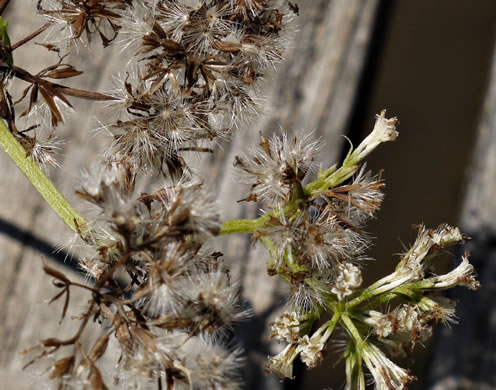Hovering over an image will enlarge it and point out features (works better on desktop than on mobile).
![]() A camera indicates there are pictures.
A camera indicates there are pictures.
![]() A speaker indicates that a botanical name is pronounced.
A speaker indicates that a botanical name is pronounced.
![]() A plus sign after a Latin name indicates that the species is further divided into varieties or subspecies.
A plus sign after a Latin name indicates that the species is further divided into varieties or subspecies.
Most habitat and range descriptions were obtained from Weakley's Flora.
Your search found 47 taxa.
Clicking ![]() one takes you to more information and/or pictures.
one takes you to more information and/or pictures.

![]()
![]() Common Name:
Japanese Climbing Fern
Common Name:
Japanese Climbing Fern
Weakley's Flora: (4/24/22) Lygodium japonicum FAMILY: Lygodiaceae
SYNONYMOUS WITH PLANTS National Database: Lygodium japonicum FAMILY: Lygodiaceae
SYNONYMOUS WITH Vascular Flora of the Carolinas (Radford, Ahles, & Bell, 1968): Lygodium japonicum 008-01-002 FAMILY: Schizaeaceae
Habitat: Disturbed areas
Common in Coastal Plain of GA & SC, uncommon in Piedmont of GA & SC (rare elsewhere in GA-NC-SC)
Non-native: east Asia

![]()
![]() Common Name:
Common Greenbrier, Common Catbrier, Bullbrier, Horsebrier
Common Name:
Common Greenbrier, Common Catbrier, Bullbrier, Horsebrier
Weakley's Flora: (4/24/22) Smilax rotundifolia FAMILY: Smilacaceae
SYNONYMOUS WITH PLANTS National Database: Smilax rotundifolia FAMILY: Smilacaceae
SYNONYMOUS WITH Vascular Flora of the Carolinas (Radford, Ahles, & Bell, 1968): Smilax rotundifolia 041-02-004 FAMILY: Liliaceae
Habitat: Dry-mesic to mesic forests and woodlands, bottomland and riparian forests, swamps, pond margins, bluffs, flatwoods, prairies, old fields, fencerows, pastures, roadsides
Common
Native to the Carolinas & Georgia

![]()
![]() Common Name:
Fringed Greenbrier, Catbrier, Stretchberry, Tramp's Trouble
Common Name:
Fringed Greenbrier, Catbrier, Stretchberry, Tramp's Trouble
Weakley's Flora: (4/24/22) Smilax bona-nox var. bona-nox FAMILY: Smilacaceae
INCLUDED WITHIN PLANTS National Database: Smilax bona-nox FAMILY: Smilacaceae
INCLUDED WITHIN Vascular Flora of the Carolinas (Radford, Ahles, & Bell, 1968): Smilax bona-nox 041-02-005 FAMILY: Liliaceae
Habitat: Dry to mesic forests and woodlands, bottomland and riparian forests, bluffs, hardwood flatwoods, pine flatwoods, prairies, old fields, fencerows, pastures, roadsides
Common
Native to the Carolinas & Georgia

![]()
![]() Common Name:
Whiteleaf Greenbrier, Wild Sarsaparilla, Sawbrier
Common Name:
Whiteleaf Greenbrier, Wild Sarsaparilla, Sawbrier
Weakley's Flora: (4/24/22) Smilax glauca FAMILY: Smilacaceae
SYNONYMOUS WITH PLANTS National Database: Smilax glauca FAMILY: Smilacaceae
SYNONYMOUS WITH Vascular Flora of the Carolinas (Radford, Ahles, & Bell, 1968): Smilax glauca 041-02-007 FAMILY: Liliaceae
Habitat: Dry to mesic forests and woodlands, bottomland and riparian forests, bluffs, hardwood flatwoods, pine flatwoods, prairies, old fields, fencerows, pastures, roadsides; uncommon in wetlands
Common
Native to the Carolinas & Georgia

![]()
![]() Common Name:
Coral Greenbrier, Red-berried Swamp Smilax
Common Name:
Coral Greenbrier, Red-berried Swamp Smilax
Weakley's Flora: (4/24/22) Smilax walteri FAMILY: Smilacaceae
SYNONYMOUS WITH PLANTS National Database: Smilax walteri FAMILY: Smilacaceae
SYNONYMOUS WITH Vascular Flora of the Carolinas (Radford, Ahles, & Bell, 1968): Smilax walteri 041-02-008 FAMILY: Liliaceae
Habitat: Swamp forests, bogs, wooded seeps, often where submersed for at least part of the year
Common in Coastal Plain (rare in Piedmont)
Native to the Carolinas & Georgia

![]()
![]() Common Name:
Bamboo-vine, Blaspheme-vine, Wild Bamboo, Laurel-leaf Greenbriar
Common Name:
Bamboo-vine, Blaspheme-vine, Wild Bamboo, Laurel-leaf Greenbriar
Weakley's Flora: (4/24/22) Smilax laurifolia FAMILY: Smilacaceae
SYNONYMOUS WITH PLANTS National Database: Smilax laurifolia FAMILY: Smilacaceae
SYNONYMOUS WITH Vascular Flora of the Carolinas (Radford, Ahles, & Bell, 1968): Smilax laurifolia 041-02-010 FAMILY: Liliaceae
Habitat: Pocosins, swamp forests, wooded seeps and bogs, swamps, and other wetlands, often with groundwater influence
Common in Coastal Plain (rare elsewhere in GA-NC-SC)
Native to the Carolinas & Georgia

![]()
![]() Common Name:
Cinnamon Vine, Chinese Yam
Common Name:
Cinnamon Vine, Chinese Yam
Weakley's Flora: (4/24/22) Dioscorea polystachya FAMILY: Dioscoreaceae
SYNONYMOUS WITH (MISAPPLIED) PLANTS National Database: Dioscorea oppositifolia FAMILY: Dioscoreaceae
SYNONYMOUS WITH Vascular Flora of the Carolinas (Radford, Ahles, & Bell, 1968): Dioscorea batatas 043-01-001 FAMILY: Dioscoreaceae
Habitat: Thickets, disturbed areas, bottomland forests
Common in Mountains & Carolina Piedmont, rare in GA Coastal Plain (uncommon elsewhere in GA-NC-SC)
Non-native: China

![]() Common Name:
Japanese Hops
Common Name:
Japanese Hops
Weakley's Flora: (4/14/23) Humulus scandens FAMILY: Cannabaceae
SYNONYMOUS WITH PLANTS National Database: Humulus japonicus FAMILY: Cannabaceae
SYNONYMOUS WITH Vascular Flora of the Carolinas (Radford, Ahles, & Bell, 1968): Humulus japonicus 058-01-002 FAMILY: Cannabaceae
Habitat: Disturbed areas, particularly in rich, alluvial soils, where it has become a serious weed along some rivers in our region
Common in NC Piedmont (rare elsewhere in GA-NC-SC)
Non-native: Japan, Taiwan, & China

![]()
![]() Common Name:
Common Climbing Buckwheat
Common Name:
Common Climbing Buckwheat
Weakley's Flora: (4/14/23) Fallopia scandens FAMILY: Polygonaceae
INCLUDING PLANTS National Database: Polygonum scandens var. scandens FAMILY: Polygonaceae
INCLUDING Vascular Flora of the Carolinas (Radford, Ahles, & Bell, 1968): Polygonum scandens var. scandens 063-04-022a FAMILY: Polygonaceae
Habitat: Moist to wet open habitats
Common (uncommon in GA Piedmont, uncommon in Coastal Plain)
Native to the Carolinas & Georgia

![]()
![]() Common Name:
Sweet Autumn Clematis, Yam-leaved Clematis, Sweet Autumn Virgin's Bower, Japanese Virgin's-bower
Common Name:
Sweet Autumn Clematis, Yam-leaved Clematis, Sweet Autumn Virgin's Bower, Japanese Virgin's-bower
Weakley's Flora: (4/24/22) Clematis terniflora FAMILY: Ranunculaceae
SYNONYMOUS WITH PLANTS National Database: Clematis terniflora FAMILY: Ranunculaceae
INCLUDING & INCLUDED WITHIN (MISAPPLIED) Vascular Flora of the Carolinas (Radford, Ahles, & Bell, 1968): Clematis dioscoreifolia 076-10-006 FAMILY: Ranunculaceae
Habitat: Disturbed areas
Common in NC Piedmont, rare in GA Mountains (uncommon elsewhere in GA-NC-SC)
Non-native: east Asia (Japan, China, Korea)

![]()
![]() Common Name:
Virgin's Bower
Common Name:
Virgin's Bower
Weakley's Flora: (4/24/22) Clematis virginiana FAMILY: Ranunculaceae
SYNONYMOUS WITH PLANTS National Database: Clematis virginiana FAMILY: Ranunculaceae
SYNONYMOUS WITH Vascular Flora of the Carolinas (Radford, Ahles, & Bell, 1968): Clematis virginiana 076-10-007 FAMILY: Ranunculaceae
Habitat: In a wide variety of moist forests, thickets, and openings
Common (rare in Coastal Plain)
Native to the Carolinas & Georgia

![]()
![]() Common Name:
Five-leaf Akebia, Chocolate-vine
Common Name:
Five-leaf Akebia, Chocolate-vine
Weakley's Flora: (4/24/22) Akebia quinata FAMILY: Lardizabalaceae
SYNONYMOUS WITH PLANTS National Database: Akebia quinata FAMILY: Lardizabalaceae
SYNONYMOUS WITH Vascular Flora of the Carolinas (Radford, Ahles, & Bell, 1968): Akebia quinata 078-01-001 FAMILY: Lardizabalaceae
Habitat: Escaped from cultivation to roadbanks, suburban woodlands, and floodplains
Rare now, likely to be a serious invasive in the Southeast over the next decade
Non-native: Japan, China & Korea

![]()
![]() Common Name:
Carolina Moonseed, Coralbeads, Carolina Snailseed, Red Moonseed
Common Name:
Carolina Moonseed, Coralbeads, Carolina Snailseed, Red Moonseed
Weakley's Flora: (4/14/23) Nephroia carolina FAMILY: Menispermaceae
SYNONYMOUS WITH PLANTS National Database: Cocculus carolinus FAMILY: Menispermaceae
SYNONYMOUS WITH Vascular Flora of the Carolinas (Radford, Ahles, & Bell, 1968): Cocculus carolinus 079-01-001 FAMILY: Menispermaceae
Habitat: Moist to dry forests and thickets, especially where calcareous, also weedy in landscaped areas
Common (uncommon in NC)
Native to the Carolinas & Georgia

![]()
![]() Common Name:
Climbing Hydrangea, Woodvamp, Decumaria, Decumary
Common Name:
Climbing Hydrangea, Woodvamp, Decumaria, Decumary
Weakley's Flora: (4/24/22) Hydrangea barbara FAMILY: Hydrangeaceae
SYNONYMOUS WITH PLANTS National Database: Decumaria barbara FAMILY: Hydrangeaceae
SYNONYMOUS WITH Vascular Flora of the Carolinas (Radford, Ahles, & Bell, 1968): Decumaria barbara 094-03-001 FAMILY: Saxifragaceae
Habitat: Swamp forests and bottomlands, moist forests in the mountains
Common (uncommon in Mountains of GA & SC, rare in NC Mountains & NC Piedmont)
Native to the Carolinas & Georgia

![]()
![]() Common Name:
Chinese Wisteria
Common Name:
Chinese Wisteria
Weakley's Flora: (4/14/23) Wisteria sinensis FAMILY: Fabaceae
SYNONYMOUS WITH PLANTS National Database: Wisteria sinensis FAMILY: Fabaceae
SYNONYMOUS WITH Vascular Flora of the Carolinas (Radford, Ahles, & Bell, 1968): Wisteria sinensis 098-31-002 FAMILY: Fabaceae
Habitat: Commonly cultivated, escaped to a wide diversity of urban, suburban, and rural forests and woodlands
Common (uncommon to rare in Mountains)
Non-native: China

![]()
![]() Common Name:
American Groundnut, Common Groundnut
Common Name:
American Groundnut, Common Groundnut
Weakley's Flora: (4/24/22) Apios americana FAMILY: Fabaceae
SYNONYMOUS WITH PLANTS National Database: Apios americana FAMILY: Fabaceae
SYNONYMOUS WITH Vascular Flora of the Carolinas (Radford, Ahles, & Bell, 1968): Apios americana 098-39-001 FAMILY: Fabaceae
Habitat: Marshes (tidal and non-tidal), wet thickets, streambanks, bottomland forests
Common
Native to the Carolinas & Georgia

![]()
![]() Common Name:
Climbing Butterfly-pea, Spurred Butterfly-pea
Common Name:
Climbing Butterfly-pea, Spurred Butterfly-pea
Weakley's Flora: (4/24/22) Centrosema virginianum var. virginianum FAMILY: Fabaceae
INCLUDED WITHIN PLANTS National Database: Centrosema virginianum FAMILY: Fabaceae
INCLUDED WITHIN Vascular Flora of the Carolinas (Radford, Ahles, & Bell, 1968): Centrosema virginianum 098-41-001 FAMILY: Fabaceae
Habitat: Dry woodlands and openings
Common
Native to the Carolinas & Georgia

![]()
![]() Common Name:
Butterfly-pea
Common Name:
Butterfly-pea
Weakley's Flora: (4/24/22) Clitoria mariana var. mariana FAMILY: Fabaceae
INCLUDED WITHIN PLANTS National Database: Clitoria mariana FAMILY: Fabaceae
INCLUDED WITHIN Vascular Flora of the Carolinas (Radford, Ahles, & Bell, 1968): Clitoria mariana 098-42-001 FAMILY: Fabaceae
Habitat: Dry woodlands and openings, roadsides
Common
Native to the Carolinas & Georgia

![]()
![]() Common Name:
Annual Sand Bean, Beach Pea, Trailing Wild Bean, Trailing Fuzzy-Bean
Common Name:
Annual Sand Bean, Beach Pea, Trailing Wild Bean, Trailing Fuzzy-Bean
Weakley's Flora: (4/24/22) Strophostyles helvola FAMILY: Fabaceae
SYNONYMOUS WITH PLANTS National Database: Strophostyles helvola FAMILY: Fabaceae
SYNONYMOUS WITH Vascular Flora of the Carolinas (Radford, Ahles, & Bell, 1968): Strophostyles helvola 098-46-001 FAMILY: Fabaceae
Habitat: Coastal dunes, beaches, dry sandy woodlands, disturbed areas
Common (rare in NC Mountains)
Native to the Carolinas & Georgia

![]()
![]() Common Name:
Kudzu, Foot-a-Day
Common Name:
Kudzu, Foot-a-Day
Weakley's Flora: (4/24/22) Pueraria montana var. lobata FAMILY: Fabaceae
SYNONYMOUS WITH PLANTS National Database: Pueraria montana var. lobata FAMILY: Fabaceae
SYNONYMOUS WITH Vascular Flora of the Carolinas (Radford, Ahles, & Bell, 1968): Pueraria lobata 098-48-001 FAMILY: Fabaceae
Habitat: Roadsides, waste areas
Common
Non-native: east Asia

![]() Common Name:
American Hog-peanut
Common Name:
American Hog-peanut
Weakley's Flora: (4/24/22) Amphicarpaea bracteata + FAMILY: Fabaceae
SYNONYMOUS WITH PLANTS National Database: Amphicarpaea bracteata + FAMILY: Fabaceae
INCLUDED WITHIN (ORTHOGRAPHIC VARIANT Vascular Flora of the Carolinas (Radford, Ahles, & Bell, 1968): Amphicarpa bracteata 098-49-001 FAMILY: Fabaceae
Look for it in dry to moist forests, thickets
Common
Native to the Carolinas & Georgia

![]()
![]() Common Name:
Eastern Poison Ivy
Common Name:
Eastern Poison Ivy
Weakley's Flora: (4/24/22) Toxicodendron radicans var. radicans FAMILY: Anacardiaceae
SYNONYMOUS WITH PLANTS National Database: Toxicodendron radicans ssp. radicans FAMILY: Anacardiaceae
INCLUDED WITHIN Vascular Flora of the Carolinas (Radford, Ahles, & Bell, 1968): Rhus radicans 110-01-002 FAMILY: Anacardiaceae
Habitat: In a wide range of habitats, including mesic forests, rock outcrops, swamp forests, brackish marshes, open areas, disturbed ground, usually in more mesic to hydric sites than T. pubescens, and particularly common in areas with fertile soils, such as bottomlands or over calcareous rocks or calcareous sands (as in maritime forests)
Common
Native to the Carolinas & Georgia

![]()
![]() Common Name:
Wintercreeper, Climbing Euonymus, Chinese Spindle-tree
Common Name:
Wintercreeper, Climbing Euonymus, Chinese Spindle-tree
Weakley's Flora: (4/14/23) Euonymus fortunei FAMILY: Celastraceae
INCLUDING PLANTS National Database: Euonymus fortunei var. radicans FAMILY: Celastraceae
Habitat: Bottomlands, swamps, upland suburban woodlands
Uncommon in Carolina Piedmont (rare elsewhere in GA-NC-SC)
Non-native: China

![]()
![]() Common Name:
Virginia Creeper
Common Name:
Virginia Creeper
Weakley's Flora: (4/24/22) Parthenocissus quinquefolia FAMILY: Vitaceae
SYNONYMOUS WITH PLANTS National Database: Parthenocissus quinquefolia FAMILY: Vitaceae
SYNONYMOUS WITH Vascular Flora of the Carolinas (Radford, Ahles, & Bell, 1968): Parthenocissus quinquefolia 120-01-001 FAMILY: Vitaceae
Habitat: Swamp forests, bottomlands, maritime forests and thickets, rock outcrops, mesic forests
Common
Native to the Carolinas & Georgia

![]()
![]() Common Name:
Muscadine, Scuppernong
Common Name:
Muscadine, Scuppernong
Weakley's Flora: (4/24/22) Muscadinia rotundifolia var. rotundifolia FAMILY: Vitaceae
SYNONYMOUS WITH PLANTS National Database: Vitis rotundifolia var. rotundifolia FAMILY: Vitaceae
SYNONYMOUS WITH Vascular Flora of the Carolinas (Radford, Ahles, & Bell, 1968): Vitis rotundifolia 120-02-001 FAMILY: Vitaceae
Habitat: Dry upland forests (especially sandy or rocky), other forests, swamps, dunes, roadsides, thickets
Common (uncommon in Mountains)
Native to the Carolinas & Georgia

![]()
![]() Common Name:
Fox Grape
Common Name:
Fox Grape
Weakley's Flora: (4/24/22) Vitis labrusca FAMILY: Vitaceae
SYNONYMOUS WITH PLANTS National Database: Vitis labrusca FAMILY: Vitaceae
SYNONYMOUS WITH Vascular Flora of the Carolinas (Radford, Ahles, & Bell, 1968): Vitis labrusca 120-02-002 FAMILY: Vitaceae
Habitat: Forests and woodlands, mainly in wet to moist situations
Common (uncommon in GA Piedmont) (rare in GA Coastal Plain)
Native to the Carolinas & Georgia

![]()
![]() Common Name:
Frost Grape, Winter Grape, Chicken Grape
Common Name:
Frost Grape, Winter Grape, Chicken Grape
Weakley's Flora: (4/24/22) Vitis vulpina FAMILY: Vitaceae
SYNONYMOUS WITH PLANTS National Database: Vitis vulpina FAMILY: Vitaceae
SYNONYMOUS WITH Vascular Flora of the Carolinas (Radford, Ahles, & Bell, 1968): Vitis vulpina 120-02-003 FAMILY: Vitaceae
Habitat: Forests and woodlands, primarily upland, but also in bottomlands
Common
Native to the Carolinas & Georgia

![]() Common Name:
Possum Grape
Common Name:
Possum Grape
Weakley's Flora: (4/14/23) Vitis baileyana FAMILY: Vitaceae
SYNONYMOUS WITH PLANTS National Database: Vitis cinerea var. baileyana FAMILY: Vitaceae
SYNONYMOUS WITH Vascular Flora of the Carolinas (Radford, Ahles, & Bell, 1968): Vitis baileyana 120-02-004 FAMILY: Vitaceae
Habitat: Forests and woodlands, mostly bottomlands
Common (uncommon in GA Piedmont, rare in Coastal Plain)
Native to the Carolinas & Georgia

![]()
![]() Common Name:
Summer Grape
Common Name:
Summer Grape
Weakley's Flora: (4/24/22) Vitis aestivalis var. aestivalis FAMILY: Vitaceae
SYNONYMOUS WITH PLANTS National Database: Vitis aestivalis var. aestivalis FAMILY: Vitaceae
SYNONYMOUS WITH Vascular Flora of the Carolinas (Radford, Ahles, & Bell, 1968): Vitis aestivalis var. aestivalis 120-02-005a FAMILY: Vitaceae
Habitat: Forests and woodlands, mostly upland
Common
Native to the Carolinas & Georgia

![]()
![]() Common Name:
Peppervine
Common Name:
Peppervine
Weakley's Flora: (4/24/22) Nekemias arborea FAMILY: Vitaceae
SYNONYMOUS WITH PLANTS National Database: Nekemias arborea FAMILY: Vitaceae
SYNONYMOUS WITH Vascular Flora of the Carolinas (Radford, Ahles, & Bell, 1968): Ampelopsis arborea 120-03-001 FAMILY: Vitaceae
Habitat: Swamp forests, marshes, wet thickets, moist to wet maritime forests
Common in Coastal Plain (uncommon to rare elsewhere in GA-NC-SC)
Native to the Carolinas & Georgia

![]()
![]() Common Name:
Porcelain-berry, Amur Peppervine
Common Name:
Porcelain-berry, Amur Peppervine
Weakley's Flora: (4/24/22) Ampelopsis glandulosa FAMILY: Vitaceae
INCLUDING PLANTS National Database: Ampelopsis brevipedunculata FAMILY: Vitaceae
INCLUDING Vascular Flora of the Carolinas (Radford, Ahles, & Bell, 1968): Ampelopsis brevipedunculata 120-03-002 FAMILY: Vitaceae
Habitat: Riverbanks, thickets and disturbed areas
Uncommon in NC & in GA Piedmont (rare elsewhere in GA & SC)
Non-native: northeast Asia

![]()
![]() Common Name:
Purple Passionflower, Maypop
Common Name:
Purple Passionflower, Maypop
Weakley's Flora: (4/24/22) Passiflora incarnata FAMILY: Passifloraceae
SYNONYMOUS WITH PLANTS National Database: Passiflora incarnata FAMILY: Passifloraceae
SYNONYMOUS WITH Vascular Flora of the Carolinas (Radford, Ahles, & Bell, 1968): Passiflora incarnata 131-01-001 FAMILY: Passifloraceae
Habitat: Roadsides, fencerows, thickets, fields
Common
Native to the Carolinas & Georgia

![]()
![]() Common Name:
Yellow Passionflower, Little Passionflower
Common Name:
Yellow Passionflower, Little Passionflower
Weakley's Flora: (4/24/22) Passiflora lutea FAMILY: Passifloraceae
SYNONYMOUS WITH PLANTS National Database: Passiflora lutea FAMILY: Passifloraceae
SYNONYMOUS WITH Vascular Flora of the Carolinas (Radford, Ahles, & Bell, 1968): Passiflora lutea 131-01-003 FAMILY: Passifloraceae
Habitat: Woodlands, forests, thickets, maritime forests
Common
Native to the Carolinas & Georgia

![]()
![]() Common Name:
English Ivy, Common Ivy
Common Name:
English Ivy, Common Ivy
Weakley's Flora: (4/14/23) Hedera helix var. helix FAMILY: Araliaceae
INCLUDED WITHIN PLANTS National Database: Hedera helix FAMILY: Araliaceae
INCLUDED WITHIN Vascular Flora of the Carolinas (Radford, Ahles, & Bell, 1968): Hedera helix 139-01-001 FAMILY: Araliaceae
Habitat: Persistent, established, and spreading around old home sites, in suburban woodlands and waste areas
Common in NC Piedmont (uncommon elsewhere in GA-NC-SC)
Non-native: Europe

![]()
![]() Common Name:
Carolina Jessamine, Yellow Jessamine
Common Name:
Carolina Jessamine, Yellow Jessamine
Weakley's Flora: (4/24/22) Gelsemium sempervirens FAMILY: Gelsemiaceae
SYNONYMOUS WITH PLANTS National Database: Gelsemium sempervirens FAMILY: Loganiaceae
SYNONYMOUS WITH Vascular Flora of the Carolinas (Radford, Ahles, & Bell, 1968): Gelsemium sempervirens 154-01-001 FAMILY: Loganiaceae
Habitat: In a wide range of habitats, from swamp forests to dry uplands and thickets, also commonly planted as an ornamental
Common (uncommon in Mountains of GA & SC) (rare in Mountains of NC)
Native to the Carolinas & Georgia

![]() Common Name:
Compact Dodder
Common Name:
Compact Dodder
Weakley's Flora: (4/24/22) Cuscuta compacta FAMILY: Convolvulaceae
INCLUDING PLANTS National Database: Cuscuta compacta var. compacta FAMILY: Cuscutaceae
SYNONYMOUS WITH Vascular Flora of the Carolinas (Radford, Ahles, & Bell, 1968): Cuscuta compacta 158-01-002 FAMILY: Convolvulaceae
Habitat: Bottomland forests, stream banks, marshes, swamps, pine savannas, calcareous seeps and streambanks, wet fields, other wet habitats, on herbaceous and especially on woody hosts
Common
Native to the Carolinas & Georgia

![]()
![]() Common Name:
Common Dodder, Swamp Dodder
Common Name:
Common Dodder, Swamp Dodder
Weakley's Flora: (4/24/22) Cuscuta gronovii FAMILY: Convolvulaceae
SYNONYMOUS WITH PLANTS National Database: Cuscuta gronovii FAMILY: Cuscutaceae
SYNONYMOUS WITH Vascular Flora of the Carolinas (Radford, Ahles, & Bell, 1968): Cuscuta gronovii 158-01-008 FAMILY: Convolvulaceae
Habitat: Stream banks, bottomland forests, bogs, marshes, swamps, wet fields, wet disturbed areas, on a very wide variety of herbaceous and woody plants
Common
Native to the Carolinas & Georgia

![]() Common Name:
Twin-flowered Bindweed, Twoflower Bindweed, Shortstalk False Bindweed
Common Name:
Twin-flowered Bindweed, Twoflower Bindweed, Shortstalk False Bindweed
Weakley's Flora: (4/14/23) Convolvulus fraterniflorus FAMILY: Convolvulaceae
SYNONYMOUS WITH PLANTS National Database: Calystegia silvatica ssp. fraterniflora FAMILY: Convolvulaceae
Habitat: Thickets, roadsides, fields, streambanks, disturbed areas
Rare
Native to the Carolinas & Georgia

![]()
![]() Common Name:
Common Morning Glory
Common Name:
Common Morning Glory
Weakley's Flora: (4/24/22) Ipomoea purpurea FAMILY: Convolvulaceae
SYNONYMOUS WITH PLANTS National Database: Ipomoea purpurea FAMILY: Convolvulaceae
SYNONYMOUS WITH Vascular Flora of the Carolinas (Radford, Ahles, & Bell, 1968): Ipomoea purpurea 158-07-003 FAMILY: Convolvulaceae
Habitat: Fields, disturbed areas
Common
Non-native: tropical America

![]()
![]() Common Name:
Small White Morning Glory, Small-flowered Morning Glory, Whitestar
Common Name:
Small White Morning Glory, Small-flowered Morning Glory, Whitestar
Weakley's Flora: (4/24/22) Ipomoea lacunosa FAMILY: Convolvulaceae
SYNONYMOUS WITH PLANTS National Database: Ipomoea lacunosa FAMILY: Convolvulaceae
SYNONYMOUS WITH Vascular Flora of the Carolinas (Radford, Ahles, & Bell, 1968): Ipomoea lacunosa 158-07-008 FAMILY: Convolvulaceae
Habitat: Riverbanks, marshes, swamps, fields, roadsides, disturbed areas
Common (uncommon in NC Mountains)
Native to the Carolinas & Georgia

![]()
![]() Common Name:
Manroot, Wild Potato Vine, Man-of-the-earth, Wild Sweet Potato
Common Name:
Manroot, Wild Potato Vine, Man-of-the-earth, Wild Sweet Potato
Weakley's Flora: (4/24/22) Ipomoea pandurata FAMILY: Convolvulaceae
SYNONYMOUS WITH PLANTS National Database: Ipomoea pandurata FAMILY: Convolvulaceae
SYNONYMOUS WITH Vascular Flora of the Carolinas (Radford, Ahles, & Bell, 1968): Ipomoea pandurata 158-07-011 FAMILY: Convolvulaceae
Habitat: Longleaf pine sandhills, dry forests and woodlands, prairies, disturbed areas
Common
Native to the Carolinas & Georgia

![]()
![]() Common Name:
Crossvine
Common Name:
Crossvine
Weakley's Flora: (4/24/22) Bignonia capreolata FAMILY: Bignoniaceae
SYNONYMOUS WITH PLANTS National Database: Bignonia capreolata FAMILY: Bignoniaceae
SYNONYMOUS WITH Vascular Flora of the Carolinas (Radford, Ahles, & Bell, 1968): Anisostichus capreolata 167-01-001 FAMILY: Bignoniaceae
Habitat: Swamp forests, bottomlands, forests, woodlands
Common (uncommon in Mountains of GA & SC) (rare in Mountains of NC)
Native to the Carolinas & Georgia

![]()
![]() Common Name:
Trumpetcreeper, Trumpet Vine, Cow-Itch Vine
Common Name:
Trumpetcreeper, Trumpet Vine, Cow-Itch Vine
Weakley's Flora: (4/24/22) Campsis radicans FAMILY: Bignoniaceae
SYNONYMOUS WITH PLANTS National Database: Campsis radicans FAMILY: Bignoniaceae
SYNONYMOUS WITH Vascular Flora of the Carolinas (Radford, Ahles, & Bell, 1968): Campsis radicans 167-02-001 FAMILY: Bignoniaceae
Habitat: Bottomland forests, swamp forests, fencerows, old fields, forests, thickets, disturbed areas
Common
Native to the Carolinas & Georgia

![]()
![]() Common Name:
Japanese Honeysuckle
Common Name:
Japanese Honeysuckle
Weakley's Flora: (4/24/22) Lonicera japonica FAMILY: Caprifoliaceae
SYNONYMOUS WITH PLANTS National Database: Lonicera japonica FAMILY: Caprifoliaceae
SYNONYMOUS WITH Vascular Flora of the Carolinas (Radford, Ahles, & Bell, 1968): Lonicera japonica 174-02-004 FAMILY: Caprifoliaceae
Habitat: Nearly ubiquitous, especially common in the Piedmont and Coastal Plain and in mesic habitats
Common
Non-native: east Asia

![]()
![]() Common Name:
Coral Honeysuckle, Trumpet Honeysuckle, Scarlet Honeysuckle, Woodbine
Common Name:
Coral Honeysuckle, Trumpet Honeysuckle, Scarlet Honeysuckle, Woodbine
Weakley's Flora: (4/24/22) Lonicera sempervirens FAMILY: Caprifoliaceae
SYNONYMOUS WITH PLANTS National Database: Lonicera sempervirens FAMILY: Caprifoliaceae
SYNONYMOUS WITH Vascular Flora of the Carolinas (Radford, Ahles, & Bell, 1968): Lonicera sempervirens 174-02-005 FAMILY: Caprifoliaceae
Habitat: Dry forests and woodlands, maritime forests
Common
Native to the Carolinas & Georgia

![]()
![]() Common Name:
Bur-cucumber, Star-cucumber, Nimble-Kate
Common Name:
Bur-cucumber, Star-cucumber, Nimble-Kate
Weakley's Flora: (4/24/22) Sicyos angulatus FAMILY: Cucurbitaceae
SYNONYMOUS WITH PLANTS National Database: Sicyos angulatus FAMILY: Cucurbitaceae
SYNONYMOUS WITH Vascular Flora of the Carolinas (Radford, Ahles, & Bell, 1968): Sicyos angulatus 177-07-001 FAMILY: Cucurbitaceae
Habitat: Moist forests and thickets
Common (rare in Coastal Plain)
Native to the Carolinas & Georgia

![]()
![]() Common Name:
Climbing Hempweed
Common Name:
Climbing Hempweed
Weakley's Flora: (4/24/22) Mikania scandens FAMILY: Asteraceae__
SYNONYMOUS WITH PLANTS National Database: Mikania scandens FAMILY: Asteraceae__
SYNONYMOUS WITH Vascular Flora of the Carolinas (Radford, Ahles, & Bell, 1968): Mikania scandens 179-35-001 FAMILY: Asteraceae__
Habitat: Marshes, swamp forests, wet thickets, streambanks, seepages
Common (rare in Mountains)
Native to the Carolinas & Georgia
Your search found 47 taxa. You are on page PAGE 1 out of 1 pages.

